








million
Stefano Grande
Each November, as the season of gratitude begins, I’m reminded how deeply generosity is woven into Manitoba’s spirit. That spirit shines through the Association of Fundraising Professionals (AFP) Manitoba Chapter’s National Philanthropy Day awards. These awards recognize those who give selflessly of their time, talent, and treasure –people who believe, as we do at the Children’s Hospital Foundation of Manitoba, that healthier futures for kids begin with a single act of kindness.
I am incredibly proud to share that we were awarded two honours this year. The Better Futures Campaign Cabinet has won the Outstanding Foundation category, and Janessa
5 ‘Celebrating generosity' u

Valid questions on how Bill 48 will work
first responders clearer, more compassionate tools.
The legislation recently introduced by the NDP government, Bill 48: The Protective Detention and Care of Intoxicated Persons Act, is difficult to oppose in principle. The intent is noble: to help individuals who are acutely intoxicated (by alcohol, drugs or other substances) and pose a danger to themselves or others. Its aim is to give our police and
Here’s the gist: under Bill 48 an intoxicated person in a public place who is a danger or causing a disturbance can be detained by police or a designated officer and taken to either a “detention location” (for up to 24 hours) or a “protective care centre” (up to 72 hours). If after 24 or 48 hours they remain intoxicated, the operator must make reasonable efforts to have a qualified health professional assess them.
However, this is where our concerns as the PC Caucus begin. We agree with the intent, but believe the framework is incomplete, lacking important supports and clarity, especially for anyone who worries about public safety, community resources and fairness across rural and urban Manitoba.
Key Issues and Questions
1. What happens after the 72hour period?
Bill 48 permits detention for 15 ‘A noble aim, but premature' u


St. John’s Cathedral in north Winnipeg is celebrating a special occasion next year. That would be the 100th anniversary of the current iteration of the venerable institution – the mother ship of the Anglican Church in Western Canada.
“We are still in the planning stages for the celebration,” reports Rene Jamieson, the Cathedral’s unofficial historian. We are expecting to have a calendar full of events.” The current Cathedral is the fourth to be built on the site. The history of Winnipeg is literally written in stone in the Cathedral and the surrounding grave markers. A visitor walking amidst the headstones will find the burials of Hudson’s Bay governors, chief factors and employees and their families and community leaders and prominent individuals





Follow us online at: lifestyles55.net
Facebook: Lifestyles55
PUBLISHER
Pegasus Publications Inc.
EDITOR
Dorothy Dobbie dorothy@pegasuspublications.net
ART DIRECTOR
Karl Thomsen karl@pegasuspublications.net
GENERAL MANAGER
Shauna Dobbie shauna@pegasuspublications.net
CONTRIBUTORS
Jeff Bereza, Marianne Cerilli, Dr. Romi Dhaliwal, Dorothy Dobbie, Shauna Dobbie, Zofia Dove, Doug Eyolfson, Stefano Grande, Jim Ingebrigtsen, Evelyn Jacks, Kevin Klein, Ian Leatt, Fred Morris, Seneka Samarasinghe, Trudy Schroeder, Robert Urano, Wayne Weedon. Canadian Publications mail product Sales agreement #40027604
PRINT ADVERTISING
Gord Gage • 204-940-2701 gord.gage@pegasuspublications.net
SUBSCRIPTIONS
If you would like to receive Lifestyles 55, we offer both monthly newspaper and online formats. To place your order, call 204-940-2700. Subscriptions are $36.00 per year, plus tax. American Express, MasterCard, Visa and cheques are accepted. To view a back issue online visit lifestyles55.net
Published monthly by: Pegasus Publications Inc. PO Box 47040, RPO Marion Winnipeg, MB R2H 3G9 204-940-2700
Lifestyles55.net
DISTRIBUTION
Available at more that 20 rural towns and cities as well as more than 100 locations in Winnipeg. If you would like bulk copies of this publication, contact Gord Gage at (204) 940-2701 or gord. gage@pegasuspublications.net. Also available digitally at whatsupwinnpeg/ lifestyles and on Facebook: Lifestyles55
EDITORIAL SUBMISSIONS
Call Dorothy Dobbie at (204) 940-2716 or email dorothy@pegasuspublications.net for more information and guidelines. Any opinions expressed in columns by our contributors are their own opinions entirely and are not necessarily shared by Pegasus Publications Inc. All information presented by the contributors is the responsibility of the writers.
Lifestyles 55 is published monthly. Reproduction in part or in whole is prohibited without seeking permission in writing from the publisher.
Copyright Pegasus Publications Inc.





As the last days of Autumn slowly slip away, we are faced with dark November. The skies are gray and the snow has not yet fallen to brighten the air. But there are good things all around if you just look for them. I was reminded of this a day or so ago when a friend, Aaron Janzen-Plett, posted a lovely photo of the sky and reminded us that there is something good to see every day if you just remember to look at the little things. He has pledged to post such a photo every day for a month. It inspired me to count our blessings by looking at the good things around us in this intrepid city and remember all the wonderful people who have worked so diligently to make it so.
We need that when all about is gloom and doom. I am not going to talk about that today. Instead, I had the occasion this morning to drive over to the lovely old neighbourhood of St. John’s, which begins just a few blocks past Redwood on the West side of the Red River. I was there to take a photo of St. John’s Cathedral to illustrate Myron’s story of its 100-year history. Driving through the neighbourhood, I could see its story, from the early days of First Nations as celebrated in St. John’s Park, through to the Scottish settlers and then the influx of Ukrainians, all of whom left their special mark and created an atmosphere of community that lingers today despite so many changes.

I decided to return home by turning right as I exited the underpass and driving past the CPR city centre yards, thinking as I drove of how each new wave of immigrants has added to the richness of our character. Yes, they change things, but that change becomes part of us as we become part of them and the result is something staggeringly strong and resilient.
Looking at the vast and empty rail right of way, I could envision a new world springing up on this land, housing parks and trees and new homes and shops: a brand-new neighbourhood that could bring the north and south of our city back together.
Even though the skies were gray and light rain was falling off and on, I felt rejuvenated, filled with hope. I saw the sorry plight of Thunderbird House, but I have faith in the resourceful folks, who own what was once the CPR Station and is now the Centre for Aboriginal Human Resource Development Inc., and who have pledged to restore this iconic building. I couldn’t help thinking of Mary Richard, the activist, restauranteur and all-round heroic woman, whose dream this was to celebrate her Metis heritage. The last time we spoke was in the Ottawa airport where she was on her way from solving more problems. With her spirit still lurking there somewhere, I know the building will be restored.
St. John’s Cathedral, tucked away on Anderson Street, is surrounded by the headstones of former parishioners, which somehow seems comforting. While I was taking my photograph, a couple stopped in their car and said, “Hello!” They recognized me and that gave me a lovely sense of neighbourhood, too.
Back on Main Street, just a few blocks away, Holy Trinity Ukrainian Orthodox Metropolitan Cathedral stands proudly, celebrating all the hard-working folks who came in the early 1900s to help build our town. It adds a touch that once seemed exotic but now is just part of the landscape. That’s how things happen.





As I write, it is still two weeks before Remembrance Day. I think of this and see a hill high above Hong Kong where the names of all the many Winnipeggers are carved in a very tall stone monument paying homage to the men who gave their lives to protect what we have here today. It is for us to remember what they did and to thank them in our hearts for their sacrifice.
Thinking of this doesn’t make me sad. It makes me proud to be part of this community and to remember that, under all the current angst and anger, there is a sunny day waiting just around the corner. Let’s keep celebrating the little things and slowly, thread by thread, we will continue to embroider



It seems we are all experts when it comes to Israeli-Palestinian relations. We feel this, gives us the right to take sides and declare who is right and who is wrong. There is a lot of delving into the past to determine the answer to that question, and as usual, the path from the past to the future leads us only into the unknown.
What we do have are some more recent facts. After a very bitter feud between Israel and the Palestinian Liberation Organization culminating in the 1990s, a peace accord was reached in Oslo, which resulted in the PLO recognizing Israel’s “right to exist in peace” while “Israel recognized the PLO as a legitimate authority representing the Palestinian people.” The democratically run Palestinian Authority was established and it governed until 2007 when Hamas leader Mahmoud Abbas representing Hamas took over. There have been no elections since. Abbas (Hamas) rules by decree.
That is where things stood on October 7, 2023, when Hamas launched a sneak attack on a music festival billed as a celebration of "friends, love and infinite freedom". The attack by about 110 heavily armed Hamas fighters in 14 pickup trucks and two motorcycles, extended to those fleeing the site and to surrounding villages. The details of deliberate brutality and murder are horrific. When the dust had settled, about 1,200 people were dead and 251 hostages were taken, about half of them being non-Israeli.
the option of succumbing to the demands of Hamas after their cowardly attack. The best the war can have achieved is to gain time, because nothing has been resolved and the whole story is bound to repeat itself in the future if nothing changes.
This time gained will be taken up with the reconstruction of the rubble that was once the Gaza strip and the city of Gaza itself. As reconstruction is carried out the tunnel construction of Hamas should be systematically destroyed and filled in to prevent the “underground’” activity of the recent past. But then what? Once that has happened, what are the chances of a better, safe world for either combatant?

Those are the bare facts, leading us to the central question. What was Israel to do?
Option No. 1. Complain and refrain. Some people think they should have taken it on the chin and set up stronger defenses so it wouldn’t happen again. But how do you do that when your communities are so integrated and when the leader of the massacre is pledged to destroy you? And how does that really prevent other sneak attacks in the future?
Option no. 2. Accept the Hamas offer to trade the hostages for all 5,200 Israeli held Palestinian prisoners at the start of the conflict. That was a pretty cheeky request from the perpetrators, and it still left the future open to similar sneak attacks with either demands. This was not the first time Hamas had taken hostages to back its demands for the release of prisoners arrested and detained for acts of terrorism against Israelis.
Given that background, it is easy to see Israeli reluctance to negotiate on the basis of nothing more than “I want my way” by Hamas.
What other options are there? The one they took, which was an all-out attack to try and flush out Hamas leaders, has brought us to today with thousands more dead on both sides, annihilation of what was once Gaza City, and a world at odds over responsibility, despite the intervention of the United Nations organizations that are supposed to promote piece. Sadly, the outcome of this approach will likely be no more successful than
This is difficult question, how do you resolve conflicting philosophical and religious beliefs? You don’t, except through tolerance and acceptance of each other’s differences. Perhaps therein lies the answer to all of us armchair quarterbacks who take sides. That is easily said, but not so easily done. I feel it myself, even upon writing these words – an inner resistance to consider the Hamas side. While I will never be able to bring myself to condone what they did and the cowardly and contemptable way in which it was done, I must consider what led them to take this action, and then perhaps, I (WE) can move on to the next step: how to promote understanding and how to help resolve issue for the future.
What will happen to the current leadership of both factions? It is likely that Netanyahu will be defeated in the next election, but will that solve anything? Not likely on it own. But although Mahmoud Abbas is still alive, he is 90, leaving a short runway for continued leadership. Abbas has said that if anything happens to incapacitate himself, his named successor, Hussein al-Sheikh (who is said to have “close ties” with Israel), would be named as interim leader until an election could be held, within 90 days, to determine who would be the permanent head. Can new leadership forge new resolve?
And down there at the ground level, there is hope. Apparently, there was a group of women, Women Lead Together in Israel and Palestine, who were engaged in trying to promote accord prior to the attack and there are other groups working toward the same goal. Whether they will be successful or not is anyone’s guess, but it is heartening to know that some are trying.
I am hoping for the best. Meanwhile, in the same spirit of reconciliation without blame, I think we have to congratulate President Donald Trump and his negotiators for at last bringing the battering to a close, at least for now.
Let’s hope it continues and let us try our personal best to reduce the heated temperature of our pro and con rhetoric – not the least, my own.
For decades, Israel has built one of the most sophisticated security systems in the world. Its intelligence agencies are formidable, its army technologically unmatched in the region and its missile defenses the envy of every threatened nation. Yet two years into the war that began on October 7, 2023, Israelis still live under constant alert. How can a state do nearly everything possible to protect itself and still not feel secure?
I am a staunch defender of Israel’s right to exist, but I’m uneasy about the brutality the country has responded with. In May 2025, a list from the Israeli Defence Force found about 8,700 Palestinian combatants (soldiers) dead. Various sources, including Doctors Without Borders, say over 60,000 combatants and civilians have been killed. Those who are still alive live amid the ruins with little food. War is ugly indeed.
Since its founding, Israel has lived with the reality of hostile neighbours and internal enemies. It has built layered defenses: the Iron Dome to intercept rockets, walls and fences around Gaza and the West Bank, and a crackerjack national security doctrine that uses intelligence as the first line of defence. When Hamas fighters burst through the border in 2023, killing about 1,200 civilians and taking hundreds hostage, Israel’s security structure responded with overwhelming force. Within weeks, Gaza was in ruins. But Israel’s sense of vulnerability did not vanish. It deepened.
to contain Hamas also trapped two million Gazans in worsening poverty, a condition in which militancy thrives.
After the Second World War, the Allied powers understood the danger of the security dilemma from bitter experience. The Treaty of Versailles after the First World War had tried to keep Europe safe by disarming and humiliating Germany, but that very isolation bred resentment and rearmament. The second time around, the Allies chose a different path: to make former enemies secure through inclusion rather than exclusion. By making power transparent and mutual, the Allies aimed to dissolve the dilemma itself, replacing suspicion with interdependence.
Israel’s military supremacy has not insulated it from global condemnation. The humanitarian disaster in Gaza, with tens of thousands dead and much of the territory uninhabitable, has cost Israel sympathy even among allies.
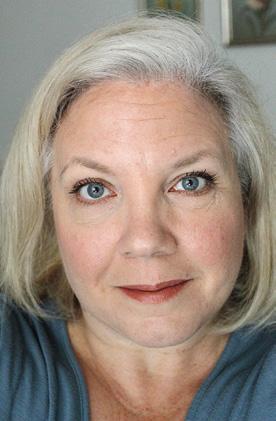
No army can guarantee safety against an army that blends in with civilians. Hamas doesn’t use bases, it uses tunnels. It views death as victory. And most of its leadership is not even in the area; they’re in Qatar, Turkey and Lebanon. They have nothing to fear. Furthermore, Hamas’s objective is not military success but survival and symbolism. Israel strikes hard, but it cannot eliminate an idea.
Walls. Closures. Targeted killings. Blockades. Every step Israel takes to be more secure has the mirror effect of feeding Palestinian anger and despair. The tighter the control, the greater the perception of occupation. This is known as the “security dilemma”: defensive measures by one side look offensive to the other, fueling the cycle of fear and retaliation. The blockade that was meant
In the broader international arena, the International Criminal Court has issued arrest warrants for Prime Minister Benjamin Netanyahu and protests have erupted around the world. Here at home, there is regularly a group of pro-Palestinian demonstrators on Osborne Street on weekends. It is a topic I dare not broach with my adult daughters; they are livid about the Israeli actions in this war in a way that only young people can be. Now, diplomatic isolation may not threaten Israel’s existence, but it erodes the legitimacy that underpins its alliances. If safety could be bought with vigilance, Israel would already be safe. Security built only on technology and retaliation cannot outlast endless occupation and statelessness. As long as Palestinians cannot see a political future, and Israelis see only enemies, both peoples remain trapped. The rockets may pause but the fear does not.
For Israel, survival will always require strength combined with imagination. Real security will come from a political settlement that makes daily life for Gazans something worth defending. That means empowering credible Palestinian governance, reopening economic space, and giving Gaza’s next generation something of real value to inherit. It means pairing military vigilance with humanitarian openness.
Israel has done nearly everything a modern state can do to protect itself. What remains not done is the part that no army can deliver: transforming the logic of endless war into one of coexistence.

Ihave to begin by saying I am still a bit apprehensive about writing for this publication given the difference in my world view from the publishers. Some might criticize me by saying I am supporting the spread of misinformation about many issues and engaging in other divisive tactics.
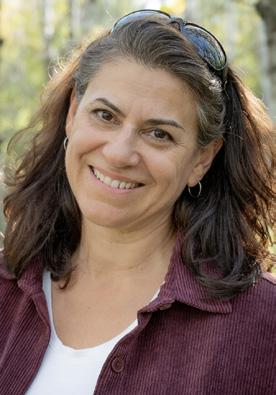
Well, writing in a publication by conservatives is one attempt to practice what I call the Politics of Unity. It is the opposite of the politics of division, or divide and conquer, blame and shame, “winning” at all costs, abusing power. The Politics of Unity uses power democratically for positive change, rather than power for the sake of power or to protect power. So much of that now.
The Politics of Unity blurs us and them, for a substantive shift from me to we, where there is only us. After years in politics, education and community work I feel the need to bring conflict resolution concepts, tools and practices to not just to our interpersonal relations but to political structures and procedures. Many people talk about shifting our political culture, so it is less brutal, reactionary, and retaliatory. The Politics of Unity has many social innovation tools and guide with forty principles, ideas, and aptitudes which lean towards political psychology for a trauma informed politics.
One of the key concepts is moving from debate to dialogue. This requires both different skills and awareness as well as different structures and procedures for decision making. The differences between debate and dialogue are clear.
Winning, defeating, convincing, Understanding, exploring, perhaps agreement
Attack and defend, escalates to violence
Listen and share information, de-escalates
Leads to personal attacks Focuses on the issue not personalities
Ends can justify the means The means and ends are more congruent
Damages relationships
Builds relationships
It is important to appreciate how our current structures and procedures encourage debate and discourage dialogue. The set up of legislatures, with an opposition and government rather, pro

1.
2
3.
4.
5.
6.
7.
and con microphones, winner takes all voting, the hierarchy of institutions are some examples. It is easy to see how current structures lead to escalation of conflict, incivility, hyper-partisanship, and polarization once we have a clear picture of how conflict escalates.
The Politics of Unity evolved to include the three Ps of politics: Policy, process and power. Process or procedure is consideration of power structures on a scale of democracy from dictatorial and autocratic to representative democracy and voting to participatory democracy based on dialogue and forming agreements. The third P is power, the way
we view, define and approach it.
Power Styles asks the questions how do the various communication and conflict styles from the Thomas Kilmann model view power? I came up with 5 Power Styles that fit with the five types; Aggressive – Power Monopolizing; Passive-Aggressive -– Power Broker; Passive – Power Avoidant; Submissive – Power Abdicator; and Assertive – Power Sharer.
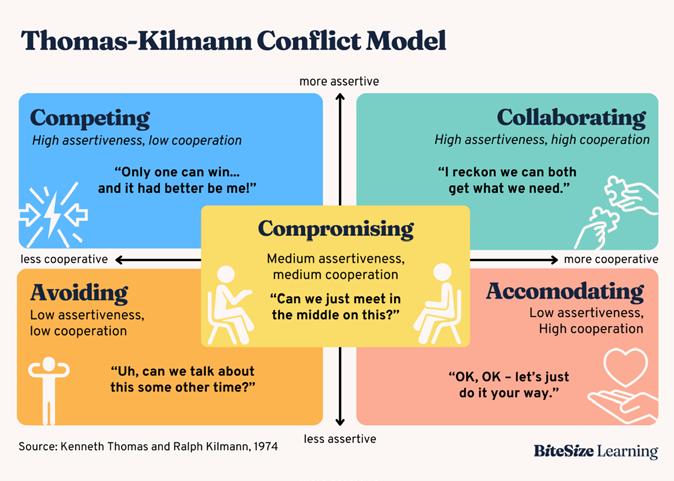
Each has an outline of the characteristics, bases of power, the orientation to power and drivers of each Power Style. For the full resource visit my website at mariannecerilli.ca
What is important is to understand that we can all use these various styles at different times under stress or fear or threat, but it is the assertive style that sets the stage for collaboration, and innovation in addressing challenges. It is with dialogue and the Politics of Unity that we make our diversity work of us by not compromising but finding new options and solutions that would not come to light without the dialogue between people different perspectives and interests. The fields of conflict resolution, psychology and community development have a lot to offer politics and our ability to bridge what divides us to make the progress we need to make. Not only can we rate our politicians for their Power Style, we can rate ourselves. Marianne hosts new CKUW Community Radio show Dialogues: Gravel Roads to City Lights. CKUW 95.9 FM has a new show co-hosted by Marianne Cerilli and Kalynn Spain – Dialogues: Gravel Roads to City Lights. The first show with guests airs Oct 24/25 at 8 a.m. The show will practice dialogue on the air with guests from rural and urban Manitoba in conversation: hot topics - cool heads. It airs Fridays at 8 a.m. in a time slot shared with Wooden Spoons a show about health, food and community. Visit CKUW.ca to listen.
Marianne is an educator and former MLA who works at the intersection of learning, community development and politics.
Continued from page 1
Dumas Colomb, our 2024 Champion Child, won for Outstanding Youth in Philanthropy.
These awards don’t just celebrate accomplishments – they tell stories about what’s possible when people come together for the children of Manitoba.
The Better Futures Campaign Cabinet brought an extraordinary vision to life. In one of the most uncertain times in recent memory, during the height of the COVID-19 pandemic, these volunteer leaders rallied our community around a bold idea: that every child in Manitoba deserves world-class care close to home.
The most successful campaign in Manitoba history
Their determination led to the most successful donor-driven health campaign in our province’s history, raising an incredible $112 million for HSC Children’s Hospital.
That generosity built the Travis Price Children’s Heart Centre, a space that now serves 6,000 young heart patients every year. It funded life-saving equip-
ment, expanded the emergency department, supported mental health play spaces, and strengthened pediatric research at the Children’s Hospital Research Institute of Manitoba. It even laid the groundwork for a new Indigenous Community Healing Space, a safe, culturally informed place for families to gather and heal together.
What stands out most to me about this Campaign Cabinet is not just the total they raised, but how they did it –with compassion, collaboration, and respect. They shared their own stories of love, loss, and hope. They opened doors by listening and by inviting others to imagine a brighter future for kids. They truly changed how health fundraising happens in Manitoba.
A kidney named Bob and a voice for kids
That same spirit of courage and generosity lives in Janessa Dumas Colomb, this year’s Outstanding Youth in Philanthropy award recipient.
At just 15, Janessa has already faced
and overcome more challenges than many adults do in a lifetime. Living in Pukatawagan, she was diagnosed with kidney disease as a young child and later received a kidney transplant, which she lovingly named “Bob”.
Janessa didn’t stop at survival. She turned her experience into purpose, becoming the first Champion Child from a remote northern First Nation.
She’s shared her story with honesty and strength at more than 20 events, from hospital fundraisers to national gatherings, helping Manitobans understand what care looks like when it requires travelling 800 kilometres for treatment and care every few weeks.
Janessa raised awareness of healthcare inequities, inspired other youth to speak up, and helped guide donors toward projects that reflect her vision for better care, including a future nephrology centre of excellence and the Indigenous Community Healing Space.
Janessa is a voice for kids who are too often unheard. She is proof that lead-
ership has nothing to do with age, and everything to do with heart.
As I reflect on these two remarkable honours, I feel immense pride – not just for the Foundation, but for our province. Manitoba is Canada’s most generous province with more people giving to charity per capita than anywhere else in the country. The AFP Manitoba Awards mirrors this generosity and reminds us that philanthropy is not about wealth. It’s about love. It’s about love for children we may never meet. It’s about love for community and love for hope itself.
To every donor, volunteer, and advocate who has supported the Children’s Hospital Foundation of Manitoba –thank you. These awards belong to you too. Together, we are building better futures for our kids, one generous act at a time.
With gratitude.
Stefano Grande is the president and CEO of Children’s Hospital Foundation of Manitoba.

Of Canada’s 33 million tax filers, 6.1 million people file a nil return to receive access to over $3 Billion in federal benefits. The tax return, in other words, is a “gateway” to receiving those benefits and therefore amongst the most important financial documents of the year for low income Canadians. But there is an obstacle: the filing of a tax return is complex and that results in low uptake of important benefits.
In fact, it is estimated that 12%1 of working age Canadians miss out on claiming close to $2 Billion in tax benefits because they don’t file a tax return.
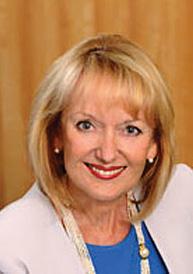
service? Income must be under a certain amount that is based on a variety of factors like your age, your province of residence and your disability status. In short, it’s a bit of a mystery. Are there income limitations? Yes, income can only be from certain income sources:
What is SimpleFile? To help, over the last several years CRA has been inviting tax filers to participate in their SimpleFile pilot project. The project has had minimal uptake so far: only 83,000 people (less than 1% of all tax filers) have used it in the period February 7, 2025 to October 5, 2025.
More recently, CRA sent invitations out to use the service in February, March and Summer of 2025 either by mail or through MyAccount.
What’s New for 2026? Starting in 2026, about a million people will have access to a pre-filled tax return in CRA’s online filing system. This will scale up to 5.5 million people by 2028, according to a recent pre-budget announcement by the Prime Minister.
In addition, CRA intends to add new information to its “Auto-fill my Return” services for people who do their own returns using certified commercial tax software.
CRA plans to “do the tax return” based on information on file for the taxpayer and the answers the taxpayer gives on the phone, digitally or by mail. Unfortunately, however, using the system is anything but simple. It may in fact be a very stressful and frustrating exercise. Further, the government doesn’t have it’s act together yet on processing the information it receives.
Recall how inaccurate and late the Auto-fill My Return service was in the past filing year. SimpleFilers may find themselves waiting longer than they would like for a reliable picture of their income from CRA, delaying their T1 filing. Worse, because the onus of proof remains on the tax filer, SimpleFilers risk incorrect assessments that have expensive consequences down the line.
However, CRA believes their service should improve exponentially. The Finance Minister, after all, gave the agency 100 days to do so in early September this year. We’ll have to wait and see. When is the SimpleFile service available? This service has been available 21 hours a day between 6 am and 3 am (Eastern time), 7 days a week starting February 24, 2025. Who qualifies for the SimpleFile
• Seniors: With three public income sources and two specific slips: The T4A(OAS) which contains the Old Age Security and Guaranteed Income Supplement / Net federal supplements – T4A(OAS), and the T4A(P) Canada or Quebec Pension Plan benefits which includes retirement, survivor and disability benefits
• Employees: Look for available 4 slips: The T4 for Employment income, the T4E for Employment Insurance Benefits, as well as the T5007 for Workers’ Compensation and Social Assistance payments or the T4A for retroactive Canada Emergency Benefits.
• Investors: Users of the service may also have a T5 slip (but not a T3 slip) with “some” interest income, although the amounts are undefined.
Nuances - File by Phone. Taxpayers using the phone service, should be prepared to call back –gain and again – if they are disconnected by CRA, or if they make a mistake. The tax filing information entered will only be saved if the tax filer actually makes it through the entire process.
You also must have a filing history to answer questions to access the services.
Once the return is filed, it is possible to receive an estimate of net income, taxable income, and any refund that the tax filer may be eligible for, but there is also a catch here: to receive this information, the tax filer will need to provide a PIN to confirm their identity. To receive one, it’s necessary to apply through CRA’s MyAccount, which requires a computer and internet access.
This seems like a circle of doom for the people who are using the phone service especially because they don’t have a computer, for example.
Nuances – Digital Filing. Taxpayers will be sent a link to use the service. These filers need to have a filing history with the CRA to qualify as they must answer questions about the last assessed tax return.
It’s also interesting to note that this service is only for the federal return, which includes all provinces and territories except one. People in Quebec will still have to file a separate Quebec return as well.
Nuances – Paper Filing. In the case of the paper filing service, there is no need for a filing history and those with exempt income (such as certain Indigenous filers) will qualify. The form is available at local friendship centres, through a community representative, band council office, Service Canada


office, or a Northern Service Centre. Also, Indigenous people who identify as Inuit, Metis and First Nations, must meet all of these conditions:
• The tax filer could not bankrupt at any time in the year, nor can the return be for a deceased taxpayer; in addition,
• There were no repayments to be made for the now discontinued universal childcare benefit payments (UCCB), or overpayments of COVID-19 benefits received from 2020 to 2022.
• The tax filer was a resident of Canada throughout the tax year with a taxable income of zero.
• If there was taxable income it could not be over the income thresholds shown in the chart below. What Could Go Wrong? Well, plenty. We have noted some of the limitations above. Most importantly, if the information is not properly entered or there are errors or omissions specific to the tax filer’s personal situation, it can significantly affect much-needed benefits.
For example, if marital status or family net income is incorrect, it could affect eligibility for the Canada Child Benefit and other refundable credits or the Canada Dental Care Plan; if the birthdate is wrong, it can affect access to GST/HST and other credits or access to Old Age Security or CPP benefits.
Then there is the postal strike for those who must paper file. CRA currently notes that it will take longer than usual to receive and process SimpleFile by Paper tax returns on its website. The proposed cure: tax filers are encouraged to use the SimpleFile Digital link on their invitation for faster processing. If you must use SimpleFile by Paper, it instructs filers to go to
the nearest CRA drop box. In short, it’s not simple.
Bottom Line: Unfortunately, many of the Canadians CRA is hoping to help with SimpleFile may not have the means or the ability to navigate a complex digital tax system or even pay for a phone. The mail service, on the other hand, has been completely unreliable.
There is a huge potential for error as well. Like the pandemic support measures, which now require repayments of benefits such as the CERB (Canada Emergency Response Benefit), the proof will be in the post-assessment audit “pudding”. Will refunds or benefits sent to the taxpayer in error be clawed back? Time will tell.
But there is another important factor. Preserving appeal routes is particularly important. Tax filers will be receiving ongoing communications about their tax filing scenarios from the CRA, but they will need to know when, where and how to pick them up important information like their Notice of Assessment in a digital world in order to preserve their rights to appeal. These are time sensitive.
Not simple. So, it is likely best for people who rely on their government benefits to supplement their cash flow to double check with an experienced tax preparer or professional, should SimpleFile go offside for them.
Notes:
1. The Mystery of Unclaimed Tax Benefits - School of Public Policy & Administration
Evelyn Jacks is President of Knowledge Bureau, a national financial education institute. Check out tax and finance courses at learn.knowledgebureau.com and catch her podcast Real Tax News You Can Use.



Each year on November 11, Canadians come together to honour the courage and sacrifice of the men and women who have served our country in times of war, conflict, and peacekeeping. Their service has safeguarded the values that define us: freedom, democracy, and compassion.
Here in Winnipeg West, we remember the many veterans and families who have contributed to that proud legacy. From those who fought overseas to those who served at home, their strength and sacrifice continue to inspire us to build a better, safer, and more caring Canada.
As we reflect on their service, we also look ahead to how we honour their legacy through action, by continuing to build a strong, secure, and inclusive country for generations to come.
housing more affordable for Canadians. Locally, the Naawi Oodena project between Tuxedo and River Heights is underway, creating new homes and affordable housing opportunities for families in our community.

Our federal government is making historic investments to strengthen Canada’s security, expand economic opportunity, and support families in every community. We are introducing strong measures to secure our borders, crack down on gun trafficking, and stop the flow of illegal drugs such as fentanyl. We are hiring one thousand new RCMP personnel and one thousand new border services officers to protect our communities and uphold public safety.
Through the new One Canadian Economy Act, we are removing barriers to interprovincial trade and fast-tracking nation building projects that will power our future, including major investments in clean energy, infrastructure, and innovation. These projects will create hundreds of thousands of good paying, unionized jobs while ensuring that more of our defence, energy, and manufacturing capabilities are built here in Canada.
We are also addressing the housing crisis through Build Canada Homes, a federal initiative designed to double the pace of home construction and make
To ensure our communities remain safe, the federal government has introduced the Bail and Sentencing Reform Act, which makes bail laws stricter and sentencing tougher for repeat and violent offenders. These reforms help protect victims, strengthen public safety, and provide law enforcement with the tools they need to keep Canadians secure.
We are also taking firm action to combat hate and violent intimidation. Through Bill C 9, the Act to Combat Hate Crime, the federal government is enhancing protections for schools, places of worship, and community spaces, ensuring that every person feels safe and respected.
On November 4, the federal government will table its 2025 Budget, a bold and generational investment in Canada’s future. This budget is designed to fuel innovation, strengthen our economy, and create opportunities that will benefit Canadians for decades. By investing in housing, clean energy, and major infrastructure, we are building a more connected, sustainable, and resilient country. It also promotes trade diversification, opening new markets for Canadian businesses while creating good paying, long term jobs across industries. Through the new Buy Canadian policy, Canadian steel, lumber, manufactured goods, and technology will be prioritized for domestic projects, ensuring that we support our own workers and businesses. This budget embodies a vision in which Canadians are our own best customers, our economy thrives from within, and our communities are stronger, more prosperous, and ready to meet the challenges of the future.
Zero is a valid number. This is one concept which mathematicians have a difficult time understanding. This is why they do not believe there can be more than one zero in any equation.
Understanding that zero is a valid number allows one to understand the concept of zero and the concept of infinity. Zero is the smallest number, it has an infinite number of decimal places and infinity is the largest number; its size goes on forever.

When we divide a number by another number, the larger the number we divide by, the smaller the result is. The rule is (If the dividend remains constant, the quotient is inversely proportional to the divisor). The larger the divisor, the smaller the quotient. For example, 15 ÷ 3 = 5 and 15 ÷ 5 = 3. As we increase the divisor from 3 to 5 the quotient decreases from 5 to 3.
Going by this rule, if we divide the number one (1) by the largest number, which is infinity (∞), the quotient (result) is the smallest number, which is zero (0). Inversely, if we divide the number one (1) by the smallest number, which is zero (0), the result (quotient) is the largest number, which is infinity (∞).
What mathematicians fail to understand is, there can be more than one zero in an equation. Even if they agree that 1 ÷ (∞) = 0, they will not agree that 5 ÷ (∞) = 5(0), because they state that zero is zero and there
can be no more than one zero in an equation. Try to envision 5 parallel lines running side by side forever into space. It is possible to have such lines. They are all infinite lines. Try to envision 5 specks which are so small they disappear into nothing. It is possible to have such specks side by side which are infinitely small. Their size is zero and so we have five zeros in this example.
Mathematicians do agree that the equation 5(π) cannot be simplified because the number associated with Pi (π) goes to an infinite number of decimal points and cannot be written out. The same is true with the number zero (0) which is infinitely small and cannot be written out as a string of numbers. Like Pi, zero also goes to an infinite number of decimal places. Therefore 5(0) cannot be simplified, it must remain as it is written.
We conclude that we cannot simplify 5 ÷ (∞) = 5(0). This equation must remain as is and cannot be simplified to 5 ÷ (∞) = 0 as some mathematicians may tell us. Rather than trying to understand this concept, mathematicians will state that any number divided by zero is undefined. I argue that it is defined. The proper equations are, 1 ÷ 0 = (∞), 5 ÷ 0 = 5(∞), 1 ÷ (∞) = 0, and 5 ÷ (∞) = 5(0). It is as simple as that.
Wayne Weedon is an Indigenous Manitoba writer of novels and short stories. To sample his wonderful work go to Wattpad.com.
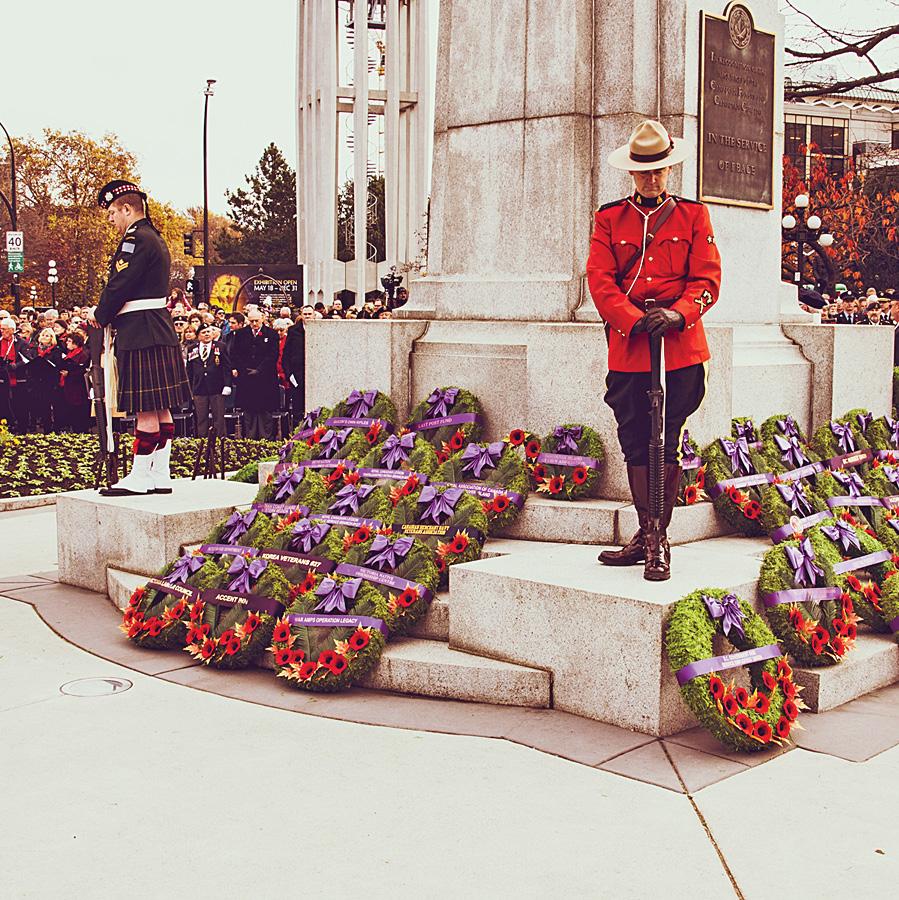
Here in Winnipeg West, we continue to strengthen connections with residents and community organizations. Our office recently established an Older Adults Advisory Council to hear directly from seniors about their priorities, experiences, and ideas for improving community well being. The council held its first meeting in mid October, and I look forward to continuing this important dialogue in the months ahead.
On this Remembrance Day, as we remember those who sacrificed everything for our freedom, we reaffirm our commitment to the values they defended. We honour their courage not only in words but through our ongoing work to build a stronger, safer, and more united Canada.
Let us take a moment to wear a poppy, attend a local ceremony, and thank a veteran for their service. Their legacy lives on in the freedoms we cherish and in the communities we continue to build together. Lest we forget.
Doug Eyolfson is the Liberal M.P. for Winnipeg West.






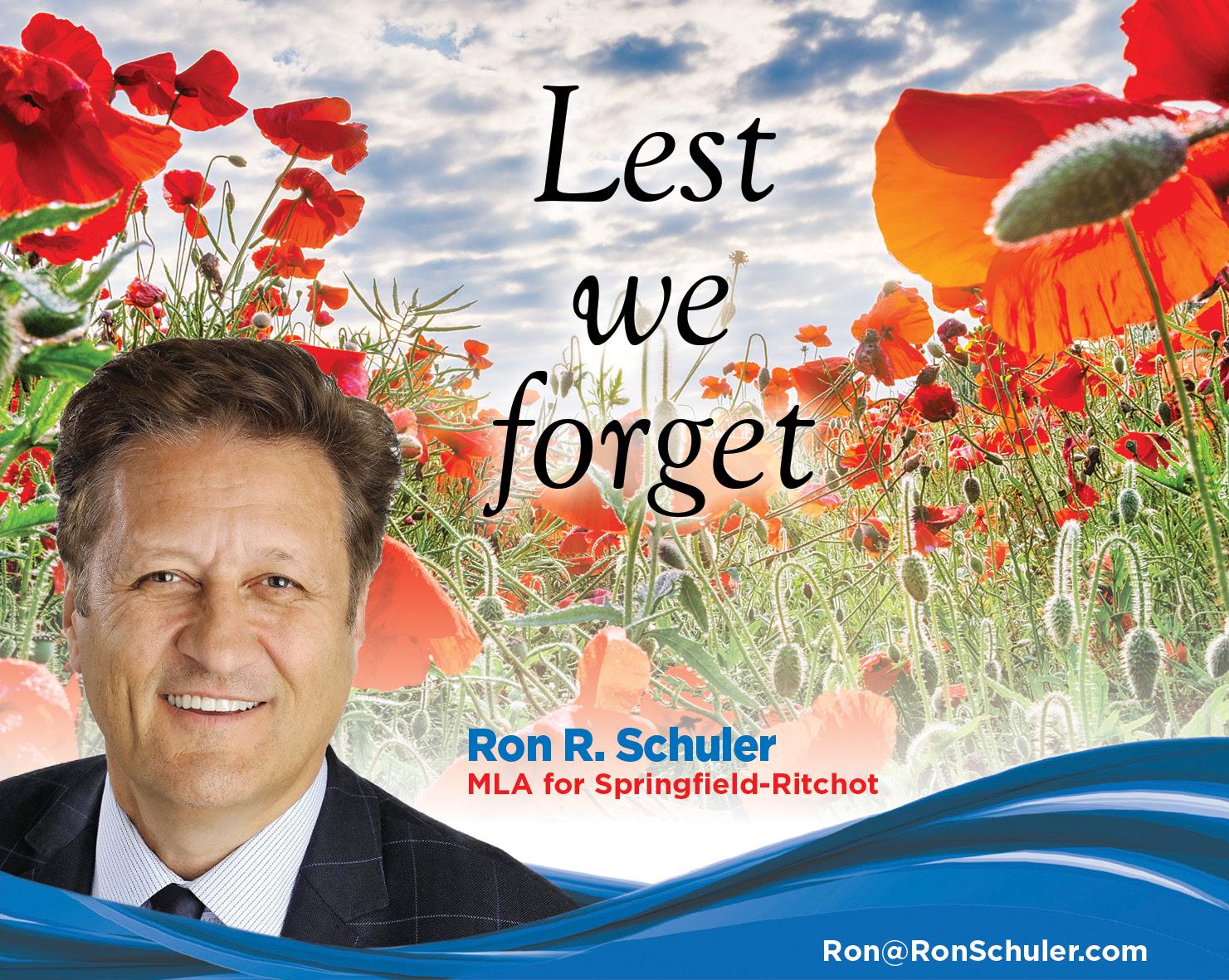

In Flanders fields the poppies blow Between the crosses, row on row, That mark our place; and in the sky
The larks, still bravely singing, fly Scarce heard amid the guns below. We are the Dead. Short days ago We lived, felt dawn, saw sunset glow, Loved, and were loved, and now we lie In Flanders fields.
Take up our quarrel with the foe: To you from failing hands we throw The torch; be yours to hold it high. If ye break faith with us who die We shall not sleep, though poppies grow In Flanders fields.
- John McCrae




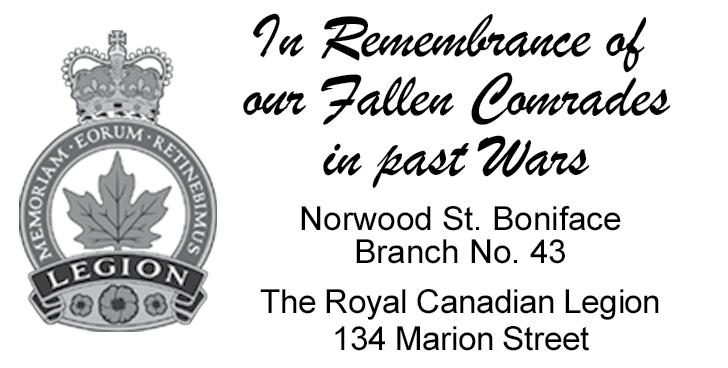



















Pork schnitzel with German potato salad is a dish that exudes warmth and comfort, drawing you in with its rich, inviting aromas and vibrant colors. The moment the golden, crispy cutlet graces your plate, it captures your attention, glistening with a tantalizing sheen that promises an indulgent experience.
The pork schnitzel, expertly pounded and coated in a delicate layer of breadcrumbs, offers a satisfying crunch with each bite. As you sink your teeth into it, the tender, juicy meat reveals itself, creating a delightful contrast that dances on your palate. A hint of lemon zest brightens the richness, awakening the senses and enhancing the flavors in a sultry embrace.
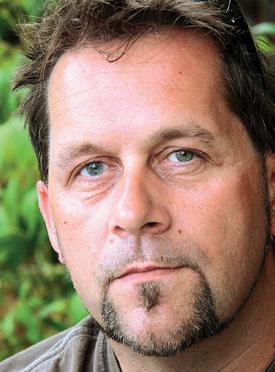
and conversation. The cozy warmth of the kitchen envelops you, as the golden hues of the schnitzel and the vibrant greens of the potato salad create a visual feast that tantalizes the eyes.
Pork schnitzel with German potato salad is more than just a meal; it’s an experience—an embrace of culinary tradition that evokes a sense of belonging. Each bite invites you to savor the moment, celebrating the beauty of togetherness and the sultry joy of good food. It’s a dish that lingers in memory, reminding you of the simple pleasures in life.
Here is what you will need:
For the potato salad
750 grams baby red potatoes, scrubbed and halved

1 ½ cups breadcrumbs
2 teaspoons freshly chopped thyme ½ cup canola oil
The all important how to:
The potato salad
Accompanying the schnitzel is the German potato salad, a harmonious partner that elevates the dish. Warm, tender potatoes are tossed in a tangy dressing of apple cider vinegar, mustard, and a touch of bacon, creating a balance of acidity and savory depth. Each bite is a revelation—a luscious combination of creamy and tangy that complements the schnitzel perfectly. The subtle crunch of onions and the earthiness of fresh herbs add layers of flavor, creating a symphony that lingers long after each forkful.
Imagine sharing this feast with loved ones, the atmosphere rich with laughter
4 thick-cut bacon slices, chopped
3 scallions sliced
2 tablespoons Bragg apple cider vinegar
2 tablespoons whole-grain mustard
1 1/2 teaspoons granulated sugar
1 1/2 teaspoons salt
Freshly cracked black pepper
Schnitzel
4 boneless pork loin chops, tenderized to 1/4-inch thickness
2 ½ teaspoons salt, plus more to taste
1 teaspoon cracked black pepper
½ cup all-purpose
3 large eggs, beaten

Place scrubbed potatoes into a large saucepan, and cover with water add salt. Bring to a boil over high heat. Reduce the heat and leave to boil gently until the potatoes are tender, 12 to 15 minutes. Remove from heat and drain the water.
Place a large skillet on a medium to high heat then add the bacon and cook until crispy. Place the crispy bacon onto a paper towel–lined plate. Strain the bacon drippings into a small cup and keep to one side. Once the bacon is cool enough to handle chop to small a small size.
Place the strained potatoes, sliced scallions, vinegar, mustard, sugar, salt, pepper, bacon, and reserved bacon drippings in a large bowl. Set aside at room temperature until ready to serve.
The schnitzel
Preheat oven to 200°F.
Set a wire rack on a rimmed baking tray lined with greaseproof paper to one side. Season pork chops evenly with a pinch of salt and a pinch pepper.
Place the flour in a large, shallow bowl. Place the eggs in a large, shallow bowl and mix together. Place the breadcrumbs, thyme, remaining pinch of salt, and pinch of pepper in a shallow bowl and mix.
One at a time, dredge the pork chops in flour; then dip into the egg, letting excess drip off. Dredge in breadcrumb mixture, patting to ensure all egg is covered by the breadcrumbs. Transfer the coated chops to a greaseproof paper lined work baking sheet.
Add oil to a large skillet about a ¼ inch deep; heat over medium-high. Once at desired temperature add one at a time and fry the chops until golden brown, about 3 minutes per side, swirling pan occasionally. As each schnitzel is cooked place onto the prepared wire rack on the baking tray, and sprinkle with salt and pepper to taste. Place the baking tray into the preheated oven to keep warm while frying remaining chops. Serve schnitzel with potato salad, and garnish salad with additional scallions and lemon wedges for that added zing. Enjoy.
Ian Leatt is a trained chef from across the pond.
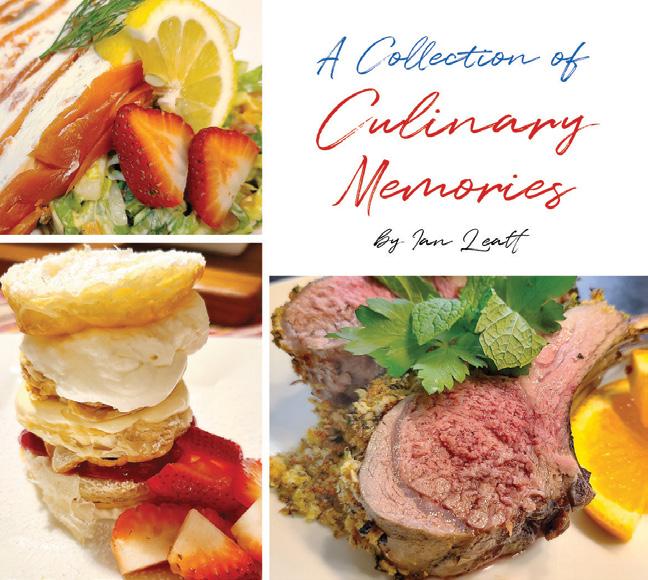

“The Yellowhead Institute estimated that less than ten percent of federal Indigenous funding ever reaches communities . . .”
We are in an era of historic spending toward Indigenous priorities. The 2024–25 federal budget devotes nearly $32 billion toward programs and services. That level of commitment demands more than applause. It demands evidence and accountability. The central question is simple: where is all that money going, and is it truly reaching the people it is meant to help?
Federal Indigenous spending has nearly tripled since 2015, rising from about $11 billion to more than $32 billion today. Yet the outcomes have not kept pace with the spending surge. A Fraser Institute report recently pointed out that improvements in Indigenous well-being appear modest and often tied more to broad national programs like the Canada Child Benefit than to targeted Indigenous spending. At the same time, the Yellowhead Institute estimated that less than ten percent of federal Indigenous funding ever reaches communities directly. If that figure is correct, the majority of the money is consumed in layers of bureaucracy, administrative costs, and third-party contracts before it touches the lives of those it is intended to help. Meanwhile, we continue to hear heartbreaking stories of families without safe drinking water, of homes in disrepair, and of children in overcrowded classrooms.

Kevin Klein
ently. Without accountability, doubts will always linger. Accountability does not mean micromanaging Indigenous communities or undermining selfdetermination. It means ensuring that when public money is spent, it is traceable, measurable, and producing real results. It means audits that are accessible to the public. It means contracts disclosed, costs broken down, and goals reported against timelines. It means building systems where Indigenous and non-Indigenous Canadians alike can see not just that money has been spent, but that it has delivered clean water, adequate housing, better schools, and stronger health services.
Practical steps are available and achievable. Major programs should face regular, independent audits, released publicly without delay. Spending should be tied to measurable outcomes such as the number of homes built or wa-
ter systems repaired. Oversight bodies should be cogoverned by Indigenous and non-Indigenous experts to safeguard both accountability and autonomy. And revenue from major projects should have reinvestment requirements, so benefits flow back into communities rather than dissipating into untracked expenses.
Canadians are spending historic amounts on Indigenous priorities because we believe in fairness and reconciliation. But money alone will not repair decades of neglect. Without accountability, it risks becoming another failed promise. With accountability, it becomes a tool for trust, a guarantee that commitments are real, and proof that reconciliation is more than a word.
Billions are being spent, yet too many families remain without clean water and safe housing. That contradiction cannot be ignored. It is not racist to demand answers. It is responsible. Public funds deserve public scrutiny, and taxpayers—Indigenous and non-Indigenous alike—deserve proof that spending delivers what was promised. Accountability is not a burden. It is the only path forward.
The spending does not stop at annual budget allocations. Canada has agreed to a series of major financial settlements in recent years, each carrying enormous price tags. The federal government reached a $40 billion settlement on First Nations child welfare—half to improve services over the next five years and half to compensate children and families harmed by past practices. The Robinson Huron Treaty settlement alone was $10 billion, with roughly $5 billion distributed directly to First Nations for payout to individual members, amounts ranging from $110,000 to $220,000 per person depending on the community. A series of classaction agreements has offered payouts ranging from $20,000 to $40,000 per individual in some cases, with certain groups eligible for more. Ontario has recently seen an $8.5 billion agreement to reform child and family services for First Nations. Add to that a recent $23.34 billion settlement related to welfare funding, along with hundreds of millions held in trust funds for bands and individuals, and the numbers quickly climb into staggering territory.
No one questions the principle of compensating Indigenous families for historic wrongs. No one disputes the need for improved services in communities that have been neglected for generations. But when these settlements and programs are combined with annual budget spending, we are talking about tens of billions of dollars flowing every year, in one form or another. Yet the realities we hear most often are of crisis and despair. If the money is flowing, why are the problems not being solved? Who exactly is receiving these funds, and how are they being managed? These are not hostile questions. They are the questions any responsible person would ask if faced with a multibillion-dollar spending program that still leaves people struggling.
Too often, simply raising these questions is treated as unacceptable. Suggest accountability in relation to Indigenous spending and you may be accused of racism, colonialism, or worse. But accountability is not an insult – it is the foundation of trust. We expect businesses to publish audited financials, charities to disclose how donations are used, and every level of government to show how tax dollars are spent. Why would Indigenous spending be exempt from the same standards? True accountability is not about blame, it is about results.
Look at Winnipeg’s Naawi-Oodena development, a project on the former Kapyong Barracks site. Treaty One Nations hold a majority share, with Canada Lands Company retaining the rest. It is billed as one of the largest Indigenous-led urban developments in the country, with potential for thousands of homes, commercial spaces, and cultural amenities. Federal support so far totals only $5.5 million, a fraction of the billion-dollar scale of the project. A gas bar has opened, but the financial details – lease revenues, reinvestment plans, debt obligations – remain murky. This project could be a model for Indigenous-led economic growth, but it will only build confidence if it operates transpar-

66% of Canadian families haven’t discussed their final wishes*

Choosing funeral and cemetery plans can be overwhelming to a grieving spouse. Plan the details now. Together. Order your FREE Estate Planning Kit by calling or visiting the locations listed below.
Chapel Lawn Funeral Home &
4000 Portage Ave., Winnipeg, MB 204 - 819 - 4297
Glen Lawn Funeral

&
455 Lagimodiere Blvd., Winnipeg, MB 204 - 900 - 8547
Glen Eden Funeral Home & Cemetery 4477 Main St., West St. Paul, MB 204 - 817- 8621
Desjardins Funeral
357 Des Meurons St., Winnipeg, MB 204 - 813 - 6063




Ispoke with a woman recently who shared that she was so astounded to be able to help community organizations that she has appreciated throughout her life in Winnipeg. She grew up on a farm where there was never enough money, and everyone had to work very hard to keep the farm in operation. After her parents died, the children inherited the farm and decided to sell the land. Each of these children of the farm family are now senior citizens themselves, and they have all inherited millions of dollars. She is learning everything she can about the best ways to help the community in a responsible and forward-thinking manner. She smiled broadly and said that she is greatly enjoying the process.

While most of us will not inherit millions of dollars, many of us find ourselves with houses that have increased in value, and retirement savings or pensions that have grown significantly larger than anticipated. The financial planners talk about the power of compound interest, but for decades it seemed to me that this special power was not touching my retirement savings, until the incremental steady investments really do start to pay off. Much to my surprise, I too will have to learn about being a philanthropist.
For example, $100 invested at a 5% annual interest rate will leave you with $105 at the end of the first
year, and the second year 5% annual interest on $105 results in an additional $5.25 which means that your total is now $110.25. This impact continues through the years. After 40 years this $100 would be worth approximately $704.
The rule of 72 is another concept that seems staggering at first, but this is an easy compound interest calculation that allows you to see how long it would take to double your investment at different interest rates. The calculation is that 72 divided by the interest rate will tell you how long it will take to double your investment. So,72 divided by an interest rate of 5% would lead to a doubling of your investment in 14.4 years, and at 12% interest, it would take just six years to double your investment.
It does not take a financial genius to get these kinds of results, it just takes patience and the discipline to leave long-term savings alone to do their work over the decades. Ideally, forget that you have those accounts, or even better, continue to make modest contributions to those accounts over the years, and the impact of your savings approach will make your senior years financially stable and give you, a person of moderate income, the ability to be a philanthropist without a major inheritance or lottery winnings.
In my years leading charitable organizations in our community, I have seen people of seemingly modest


means who give annual small gifts to a community organization suddenly leave gifts of $100,000 and more to the organizations and causes they have appreciated during their lives. When I have seen those kinds of gifts come in, I have always wished that I had met the person in life and had an opportunity to thank them for their generous support. There is a way to make this happen, it is through participating in a legacy giving circle of any organization you care about.
It is a good idea to speak with one of the development officers in the charity to find out more about their legacy giving programs. Most organisations these days have planned giving programs and societies that encourage people to think about gifts to the charity in their wills. There are ways to find out all about the programs the charity offers and decide to create scholarships for students, sponsor an annual concert, provide nourishment for children or homeless people, help protect the environment, or any other cause that is your passion.
The joy there is in thinking about how you can make a difference in your community for future generations is truly energizing and inspiring. As a bonus, this generous way of thinking also will provide significant tax benefits to your estate. Live generously, it makes a world of difference.
You can sponsor a dancer in the Royal Winnipeg Ballet through a legacy gift.
Trudy Schroeder provides project planning and management services to the community through Arts and Heritage Solutions.



through the decade right up to the present day – including the members of the Richardson Family – one of our city’s leading families for many decades.
St. John’s Cathedral’s origin goes back to the Lord Selkirk Settlers in 1812 –the first organized European settlement at the junction of the Red and Assiniboine Rivers. It has always been a given that one of the first acts of a new community is to build a church and cemetery –and the new settlers were no exception.
According to Jamieson, the churchyard – the oldest cemetery in Western Canada – came first.
“The settlers had to wait a few years until they could attract a minister to this still remote posting,” she notes.
1852. In 1854, under his leadership, the Selkirk Settlers built the Old Kildonan Presbyterian Church – which is still standing near Kildonan Park.)
West built the first church (the forerunner of the current Cathedral) – a simple, wooden structure – in 1822. That first church was replaced by a stone structure in 1832.

The first minister, the Anglican Reverend John West, arrived in the colony on October 14, 1820. His mandate was to serve not only the Lord Selkirk settlers – most of whom were Presbyterian – but also the Hudson’s Bay Company employees and, in addition to reaching out to the Indigenous People.
“His first year here,” notes Jamieson, “West spent much of his time marrying Hudson’s Bay men to the Aboriginal women they had married in indigenous ceremonies (they were called country wives) and baptizing their children.”
(The first Presbyterian Minister, John Black, arrived in the Red River colony in
The first purpose-built Cathedral in the site was erected in 1862 under the leadership of the Rt. Reverend David Anderson, first Bishop of Rupertsland (1849-1864).
The current Cathedral, Jamieson reports, built in 1926, incorporates element of Medieval English design including a Norman tower and barrelvaulted ceiling and Gothic arched doors and windows. A two-story was built on the northeast corner in 1959 to serve as the Dean’s vestry and office, the sacristy, the church office and the choir room.
According to the Cathedral’s historical brochure, two of the stonemasons who worked on the 1862 Cathedral also worked – both in their 80s at the timeon the current structure.
“Our church has always been a trailblazer,” says Jamieson, a retired freelance writer, advertising executive and teacher (to list a few of her accomplishment) who joined the congregation as a congregant and staff member 25 years
ago after the church she was attending shut down. “For example, while John West had already started a school for boys, Mary Jones, the wife of his successor, David Jones (he came here in 1823) felt that it was important for girls to also get an education, too, and persuaded her husband to open the school to the local girls so that they, too could learn to read, write and do arithmetic.
Jamieson notes that when Mary died after giving birth to the couple’s sixth child, the school children raised money to pay for marble plaque which is still on the wall of the current Cathedral.
In addition, Jamieson continues, St. John’s was the first Anglican church in North America to ordain Indigenous priests – Henry Budd, James Settee and James Hope. “Among our current congregants are two direct descendants of Rev. James Settee (the People’s Wardens) and Rev. Henry Budd,” she notes.
And even today, Jamieson notes, St. John’s Cathedral continues to lead.
In January, 2012, for example, Pastor Paul Johnson, an ordained pastor in the Evangelical Lutheran Church of Canada, was appointed incumbent Rector of the Cathedral and Dean of the diocese of Rupert’s Land, becoming the first Lutheran to hold those offices in western Canada.
This was made possible, she points out, by the covenant between the Anglican Church of Canada (ACC ) and the Evangelical Lutheran Church in Canada (ELCIC) at the ACC’s General Synod in Waterloo, Ontario, in 2001 - where representatives of the two churches issued

an agreement in principle – the Waterloo Declaration - that allows for the full interchangeability of clergy, full communion rights for members, and creates a religious fellowship linking the two denominations to work toward greater visible unity in the Church of God.
“There wasn’t a dry eye in our church when Paul retired last year,” Jamieson recalls.
In other firsts, the Reverend Deacon Gabriel Kwenga is the first deacon from Canada from Africa to serve at St. John’s Cathedral – and the recently consecrated Right Reverend Naboth Manzongo is the first from Africa to be elected as Bishop of the Diocese of Rupert’s Land. Bishop Manzongo succeeds the former Bishop Geoffrey Woodcroft (who retired a year ago due to illness).
“What we are seeing is in essence revere missionary work,” Jamieson observed. “Instead of the western world sending Anglican members to serve congregations in other parts of the world, those other Anglicans are coming here to reinforce our own congregations.
Although mainline churches across Canada have been struggling in recent years to keep the doors open, Jamieson is happy to report that St. John’s Cathedral continues to thrive – buoyed in part by new members from other Anglican churches that have closed and by the influx of worshippers from abroad who have come to Winnipeg.
“We have parishioners coming from all parts of the world,” she says. “St. John’s Cathedral is a beautiful place to be on Sundays.



The Winnipeg Symphony Orchestra (WSO) announced the commemorative naming of the Michael Nesbitt Composers Institute, in recognition of Mr. Nesbitt’s 90th birthday on Thursday, October 2. After a hiatus in 2025, the Composers Institute will return under its new name as part of the renowned Winnipeg New Music Festival (WNMF), with sessions scheduled to run from January 19 to January 23, 2026.
“Michael has always been passionate about the quality education opportunities available in Winnipeg, and his unconditional support has been fundamental to the ongoing success of the WNMF Composers Institute,” says WSO Music Director and WNMF Artistic Director Daniel Raiskin. “I feel deeply grateful to Michael and particularly happy he has accepted our wish to honour his many years of support,” adds Raiskin.
Started in 2017 by WSO Composerin-Residence and WNMF Co-Curator Haralabos [Harry] Stafylakis, this national, juried, six-day competition provides a unique professional training opportunity for emerging composers. Integrated with the WNMF, participants are immersed in the orchestral world through mentorship from some of Canada’s leading composers.
“I originally conceived of the WNMF Composers Institute based on my own life-changing experience at the 2014 Underwood New Music Readings,” reflects Stafylakis. “That event dramatically altered the course of my emerging career and directly led to my position
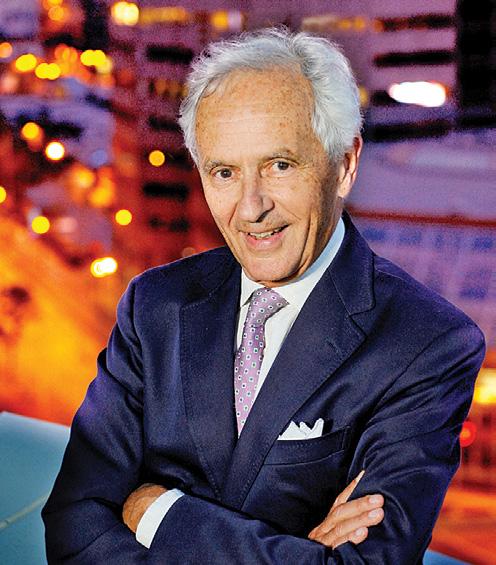

with the WSO. It has been my honour to direct the Composers Institute since 2017. And it feels eminently appropriate that it now bears the name of the great Michael Nesbitt, who has been the staunchest supporter of the Winnipeg New Music Festival’s artistic mission.”
Throughout its history, the WSO has played a leading role in supporting the creation of new music in Canada, most notably through the WNMF and the Composers Institute. For over a decade, Mr. Nesbitt has been the WNMF’s premier patron, and with his support, the festival has featured influential and celebrated artists such as Philip Glass, Caroline Shaw, and Julia Wolfe.
Mr. Nesbitt, renowned for his philanthropic work, has been a longtime supporter of the WSO and the broader arts
community. His contributions reflect his passions and have brought world-class art and culture to Winnipeg. Through his philanthropy, he has enriched the lives of many, providing educational opportunities through the University of Manitoba’s School of Art Gallery’s Visiting Curator Program and the Desautels Faculty of Music. His generosity was crucial to establishing the Babs Asper Professorship in Jazz Performance and to launching the Bridge Program, bringing jazz music instruction to innercity kids. He also gave a foundational gift to the newly opened Desautels Concert Hall.
Mr. Nesbitt is also an ardent lover of the visual arts and has been a major supporter of the Winnipeg Art Gallery Qaumajuq and the National Gallery.
Mr. Nesbitt has left an indelible mark on Winnipeg’s cultural landscape. His extensive contributions to the arts, education, and community development sectors are a testament to the power of philanthropy to enrich the lives of many.
WNMF 2026 takes place from Wednesday, January 21, to Thursday, January 29, 2026. The festival will feature the world premiere of Stafylakis’ Symphony No. 3 and welcome distinguished guest composer Christopher Theofanidis.
Audiences will also enjoy virtuosic performances by percussion soloist Lisa Pegher, acclaimed clarinetist Stephen Williamson, and the award-winning, guitar-based CC Duo (Adam Cicchilitti and Steven Cowan).
Manitoba Opera will present a season of secrets and seductions in 2025/26, the company’s 53rd season, with two of the greatest operas ever written, performed by world-class artists at the height of their craft.
The season opens with Tosca November 22, 26 and 28, 2025, and The Marriage of Figaro (Le nozze di Figaro) will be presented April 18, 22, and 24, 2026. Both productions will be sung in Italian with projected English translations and will be presented at the Centennial Concert Hall.
“Opera is a world of passion, power, and intrigue, and our 2025/26 season is brimming with all three,” commented Larry Desrochers, General Director & CEO upon announcing the season this past spring. “Whether you crave highstakes drama or delightful mischief, we have two extraordinary productions that promise unforgettable nights at the opera.”
Puccini’s Tosca is an electrifying thriller packed with love, jealousy, and betrayal. With some of the most breathtaking music ever written, this opera grips you from the very first note and doesn’t let you go.
Heart-pounding drama, intense passion, and soaring melodies are a killer combination in this fateful day in the life of the diva Tosca. In revolutionary Rome, Tosca finds herself in a life-and-



death struggle with the corrupt chief of police who will stop at nothing to satisfy his lust for her.
Making her Manitoba Opera debut, the phenomenal soprano Marina CostaJackson (her sister, Ginger, performed with MO last season as the fiery Carmen) brings her powerhouse voice and spellbinding intensity to the role of Tosca. Tenor David Pomeroy, last seen with MO as Don José in 2024’s Carmen, returns as the heroic artist Cavaradossi.
Baritone Gregory Dahl, renowned for his formidable portrayals, returns to his hometown to deliver a chilling Scarpia.
This spell-binding classic features some of Puccini’s best including “Vissi
d’arte,” the opera’s most famous aria.
In the spring, political treachery is traded for comic chaos with Mozart’s
The Marriage of Figaro, a masterful blend of wit, romance, and mistaken identities. It’s the eve of Figaro and Susanna’s wedding, but nothing is going right. Can the servants turn the tables on the masters and save the day? Will love triumph? This great ensemble comedy is a whirlwind of clever schemes and unexpected twists, set to some of the most exquisite music ever composed.
Making his Manitoba Opera debut, baritone Phillip Addis, charms as the scheming Count. The captivating Jamie
Groote, last seen with MO as Fiordiligi in Così fan tutte, returns as the Countess. Baritone Robert Mellon, praised for his "glorious voice that burst[s] out brimming with life and vigor," will be making his MO debut as Figaro. Also making her company debut, Caitlin Wood will bring her acclaimed comedic timing and vocal brilliance to the beloved character of Susanna.
From the famous overture to the finale, this social commentary on class and love unfolds with brilliant music, memorable melodies, lost love, and forgiveness.
For tickets and more information go to mbopera.ca or call 204-944-8824.
up to 72 hours in a protective care centre but is silent on what happens if someone’s condition continues (for example in stimulant-induced psychosis) or when that person is released. Stimulant-driven psychosis (for example from methamphetamine) can last well beyond 72 hours, yet the bill provides no mandated path for extended care, transition, or follow-up.
2. Where are the supports coming from and who runs the protective care units?
The bill refers to “protective care centres” to be designated by regulation, but we have little detail on staffing, governance, location, access, or how these centres will be integrated with health, social services, addictions and mentalhealth systems. This could create a “revolving door” where people cycle in and out without meaningful help or community reintegration.

how far will rural individuals have to travel? Who pays for transport? Who ensures timely access? If protective care centres are only in major centres, rural police and paramedics will bear the burden, often with inadequate tools.
4. Location and community-impact concerns
Jeff Bereza
3. Resource and geographical equity, especially for rural Manitoba
What may work in Winnipeg may not work in small and remote communities. We need clarity:
Another question: where will these centres be located? How far from schools, day-care settings, and residential neighbourhoods? Will they be placed in vulnerable communities or concentrated in downtown zones? There has been minimal discussion about this; thus, community concerns remain unaddressed.
5. Oversight, safeguards and rights of the intoxicated person
If someone is being detained, we must ensure their rights are protected, assessments are timely, and care is ongoing. We must guard against the detention becoming the main event, rather than meaningful connection to treatment or supports.
6. Transparency and meaningful debate
While members of the PC Caucus were willing
It was impossible not to run into him or walk by without being stopped for a moment for a short exchange. He was always, I really mean always greeting people and giving people compliments. Not only to his neighbours or people passing him by in the hallway, but also to those who were taking care of him, after his illness made him totally dependent on others.
His health prognosis was very grim. Many of us would turn bitter, angry or depressed, maybe even rude, but not him. He was consistent in his kindness, consideration and respect for others.
Peter (name changed) was a young man, and many would think and say that his fate was very unfortunate.
ally are turning for the worse.
He used to regularly attend my sessions. One day after the end of one of those sessions he told me, “You make us think”. That was such surprising feedback. I can’t begin to tell you how powerfully these words resonate with me today.

He had an incurable disease. It left him unable to do the simplest things which many of us take for granted, like an ability to chew, swallow or speak. He was fully aware that things gradu-
I just talked to him last week. I sat near him and held his hand. He told me that he is afraid to die. He knew the end of his life was near. He was aware.
Trying to minimize his fear, I shared with him about my experience of death and what I know about it, which I seldom share with others, to which he replied, “You are right, I remember now. My mom’s spirit came to me after she died.” Silence filled the room, and I sensed calmness within him.
After a long pause, with an enormous effort he shared “You touched my heart.” My eyes welled up with tears.
to spend all night listening to experts and front-line voices at committee, the NDP government declined extra time for those who have long worked in addictions/mental-health and front-line social services to flesh out how this would work in practice in Manitoba. That unwillingness to engage is deeply troubling, given the complexity of the issue.
In conclusion, the Manitoba PC caucus wholeheartedly supports the objective of Bill 48, which is to enable a compassionate, timely response to people in crisis due to intoxication, to give police and health-systems better tools, and to reduce harm. But we need clear supports, specified resources (especially in rural settings), and detail on what happens after the 72-hour window. So far, that information has not been forthcoming.
Our message to the government is this: let’s get the framework and the supports in place before we rush this through. Let’s ensure this will be a law that truly protects and helps, not one that promises much but delivers little. Until there is a provincial plan showing how protective care centres will be staffed, funded, located and integrated with addictions/mental health, and what happens at discharge, profound caution is required before rolling out this bill.
A moment later, with his consent, I blessed him and then he gently pulled his hand out of mine, a clear indication that the visit is over.
The next day he was gone. He passed on.
Now we all recall his so-called corny compliments shared by him with all of us every day. They became Peter’s legacy.
To think of it, the words we utter are very important. Some, which are spoken in truth and with positive intent, can give hope, upliftment and joy to others. Other words, when ill intended, can cause life’s long-lasting damage and induce enormous suffering. Words carry power!
Words matter, they can change lives for better or worse. Peter knew that!
He left a beautiful legacy with each and every one of us. He gave us countless gifts. His beautiful words are locked in our memories and our hearts forever.
He knew they would do that!
Zofia Dove is an international keynote speaker, author and producer, host and director of the series “Discovering Beauty Everywhere”.
Be prepared – you could get hit by a bus!
Robert Baden-Powell is a name many of us are familiar with. He’s the founder of Boy Scouts. That was in 1908. Two years later he asked his sister Agnes to create something much the same for girls and thus became Girl Guides. The two organizations have many things in common but in my view the most important is their motto. Be Prepared. First of all you need a will. If you don’t have one make one. You must be 18 or over and it has to be hand-written if not prepared by a lawyer and signed by two witnesses. You need to appoint an executor. He or she can be a spouse, a friend, a trusted family member, an accountant, a business partner or a lawyer. Find more information at www.gov. mb.ca.
your estate. This is something else everyone should do. I’m working on mine.
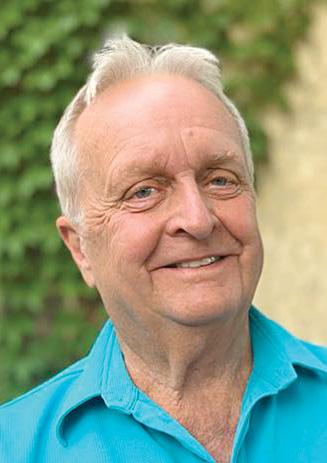
Get started with a file folder, a one-inch binder or anything you might already have to keep all your information in one place. Kick things off with a cover letter. Sort of a “To Whom it May Concern” type of thing. This might be a good page to identify exactly what you want done with your remains. This information will also be specified in you will. Sadly, a very common occurrence after an individual’s demise is a disagreement among a person’s children as to what should happen with the remains. It might be a conflict of religious beliefs or just their personal wishes. Remember, these are your wishes not theirs.
matic withdrawals for some of your monthly payments. You will want any of your bills paid first and then have them shut them down.
Here are some examples of items to include in your folder, some of which will have to be contacted by your executor: your S.I.N., all the passwords for your devices and any online services (such as hydro and all other utilities), passport, photocopy of credit and debit cards including membership cards, driver’s license, Autopac and CAA, all medical related cards, contact numbers for doctor and dentist, if you own a house include any mortgage information, repair and maintenance records as well as your house insurance provider, the bank you deal with including account numbers. If you have a safety deposit box where do you keep the key? List any magazine and newspaper subscriptions. Don’t forget to put all investment and life insurance documents in the folder.
tion online on how to be prepared for the inevitable. Once you have compiled all the relevant information in one place, make a few copies. Put a copy in a safe location and give one to a person you trust and one to each of your children. What you will have in the end is a detailed account of everything someone will need to take care of all the necessary bits of business after you’re gone. But most importantly, what you will have now is peace of mind.
Always remember, tomorrow is promised to no one. Be prepared. Take a trip down Jim’s free musical memory lane podcasts online at Lifestyles55radio.ca.
A very smart thing to do is something my sister-in-law calls the “In case I get unexpectantly hit by a bus” binder and she gave a copy to her daughter for safe keeping. A list such as this makes life and work so much easier when the time comes to settle
It’s critical that whoever you have taking care of business, as it were, not contact your banking institutions first. The reason is that the bank might immediately freeze your accounts unless they are joint and then they pass automatically to survivors. This is problematic if you have auto-
Include your full name, date of birth and any personal history as well as the names of parents and children and spouse for obituary purposes. Another thing to do is identify personal items you want to go to specific people. Placing notes on the back of artwork is one example. There is a wealth of free informa-


With the holiday season around the corner, it’s easy to indulge in all the sweets and delicious treats that come with it. While enjoying these moments is part of the celebration, it’s also a good reminder to keep our blood sugar and our eye health in check.
Diabetes can affect more than just your blood sugar — it can quietly impact your eyesight too. One of the most common and serious eye complications of diabetes is diabetic retinopathy, a condition that damages the tiny blood vessels in the retina. Left unchecked, it can lead to vision loss or even blindness.
off completely, disrupting normal vision. In some cases, new but fragile blood vessels grow in their place — these can easily bleed and cause scar tissue to form, leading to more severe complications.

The challenge is that diabetic retinopathy often develops without early symptoms. You may not notice any changes in vision until the condition becomes more advanced. That’s why it’s so important to schedule a comprehensive, dilated eye exam at least once a year if you have diabetes. Early detection gives us the best chance to protect your sight.
How Diabetes Affects the Eyes
Over time, high blood sugar can damage the delicate blood vessels that nourish your retina. These vessels can begin to leak, swell, or close
People with diabetes are also at higher risk for cataracts and glaucoma.
Symptoms to Watch For
In its early stages, diabetic retinopathy may cause no symptoms at all. But as it progresses, you might notice:
• Blurry vision or trouble focusing
• Difficulty seeing at night
• Dark spots or “floaters”
• Fluctuating vision that seems to improve and worsen
Advanced Complications
When diabetic retinopathy advances, it can lead to other vision-threatening conditions such as:
• Diabetic macular edema (DME): Fluid leaks into the central part of the retina, causing blurry or distorted vision.
• Retinal detachment: Scar tissue pulls the retina away from the back of the eye.
• Neovascular glaucoma: Abnormal blood vessels block normal fluid drainage, increasing eye pressure.
Garfield Street runs north from Palmerston Street near the Assiniboine River to Portage Avenue, one street west of Sherburn.
In 1880, James Garfield a lawyer, preacher and Civil War General from Ohio, was elected the President of the United States. Garfield was assassinated the following year. In 1882, Garfield Street in Winnipeg was named in his memory.
Jemima Mills, Charles Beemish, and James Whitney were the first Garfield Street residents mentioned in the 1905 Henderson Directory. They lived on the east side of the street between Portage and Livina (now St. Matthews). Garfield Street South was the farm of Amble Hogue. In 1906, Happy Land an amusement park which included a baseball diamond for the Winnipeg Maroons of the Northern Copper League, opened. The park was permanently closed in 1909. The new owner, William Fisher, had a plan to extend Sherburn and Garfield Street south of Portage. The residents of Garfield Street South are first listed in the 1918 Henderson Directory.
and Stina Johnson.
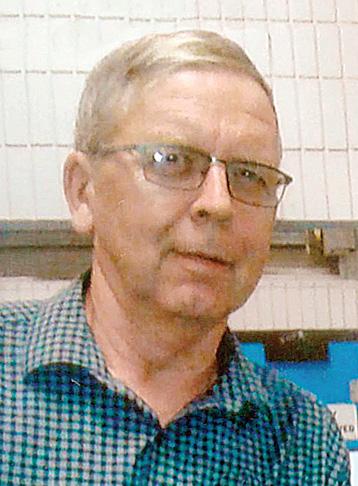
Gudmundur (Mundy) Johnson was the long time Icelandic barber.
In 1923, Morris Kim started a fur business that lasted 50 years. After Morris's 1949 death, his wife Sadie took over the management of the business. The business closed in 1973, Fridrik Kristjansson was a building contractor whose projects included the Hekla Block at 260 Toronto Street and the Asa Court at 221 Langside. During a 50-year career in the Motion Theatre business, Mesho Triller owned the Dominion Theatre at 175 Portage Avenue. Einar Arnason owned Plax Lab that manufactured plastic signs. In 1984, Bud Bjarnason and his wife Sandra founded Molly Brown, a temporary staffing company, in Bellevue, Washington. The company is now owned by Bud and Sandra's children Greg and Susan.
Signy Syms owned Ce Soir Lingerie on Meadowood Drive between 2001 and 2016.
Eatons has become a part of my street series stories. They employed several Garfield residents. Helgi Johnson was a long-time employee. Harold Sadler, the Mail Order manager, had a 40-year career at Eatons. Other Garfield Street Eatons employees included Margaret Wishnewski, Alfred Wishnewski

Prevention and Management
The good news? You have powerful tools to protect your vision.
Here’s what makes a real difference:
• Manage your blood sugar — work with your healthcare team to meet your target A1C levels.
• Control blood pressure and cholesterol, which can worsen eye damage.
• Stay active and eat a balanced diet.
• Don’t skip your annual eye exam. Even if your vision feels fine, your optometrist can detect changes long before symptoms appear.
If diabetic retinopathy is detected,
During the 1920s and 1930s, the Children of Garfield Street were often mentioned in the Children's Pages of the Winnipeg Free Press. In 1928, Nan Hughes, age 6, won a colouring contest. The following year, Donald Rogers, age 13, won another colouring contest. In 1930, Elma McKinnon wrote a thoughtful letter about her summer visit to her grandmother in Carman. Patricia Johnson won a 1960 Award for the best singer under the age of 14 at the Manitoba Music Festival. Shirley Bjarnason was a Princess at the 1962 Gimli Icelandic Festival. In 1974, Susan Pospishell was Miss Deaf Canada.
In 1943, Roy, Ester Mark and family moved to Garfield Street. The Marks were one of the first Asian families in the West End. Roy was the proprietor of the Exchange Cafe at 610 Main Street When Roy died in 1965, his funeral procession had a police escort. Their son Richard was a 1957-58 Eatons Junior Executive. During his university years, Richard was a member of the Delta Upsilon Fraternity. In 1965, Richard graduated from medical school. Richard practiced in three provinces and became a specialist in radiology and nuclear medicine.
Heather Sigurdson Ireland was a Princess at the 1955 Gimli Icelandic festival. In 1958, Heather was crowned Miss Manitoba. Heather became a professional singer appearing at concerts, on radio, and TV. Heather became a music teacher at Westwood Collegiate. Heather also served for 20 years as Honorary Icelandic Consul.
I found several connections to churches. In 1962, First Lutheran's President, my uncle, Hallador Bjarnason, led the campaign to build the First Lutheran Parish Hall. In August 28 to 29, 1962, the founding convention of the Central Canada Synod was held in the new building. Stina Johnson was the First Lutheran music librarian for decades. The building remains in use and is the venue for the annual Trivia Night.
Sister Geraldine MacNamara grew up on Garfield Street. In 1976, Sister Geraldine founded Rossbrook House, a neighbourhood Center for youth. Sister Geraldine received many awards for her community service. In 1978, Sister Geraldine became the first non-native to be named the Native Citizen of the Year. Five years later, in 1983, Sister Geraldine was awarded the Order of Canada. Sister MacNamara

treatment options like eye injections, laser therapy, or surgery can help stop further damage and preserve your vision — but early diagnosis is key.
As we age, maintaining good eye health becomes even more important — especially for those living with diabetes. Protecting your sight starts with awareness, proactive care, and regular check-ups!
If you have diabetes and haven’t had a dilated eye exam this year, consider this your reminder — your vision is worth it.
Dr. Romie Dhaliwal, B. SC., O.D. is the owner and optometrist at Academy Optical.
School at 460 Sargent is named in her memory, Between 1952 and 1975, Winnipeg's first open line radio show Ask the Pastor aired on CKY Radio. The Sunday night program offered "sincere and human advice." First English Lutheran Pastor Harvey Egler hosted the show.
Gordon and his son Bruce Hudson are both in the Manitoba Curling Hall of Fame. Gordon won backto-back Briers in 1928-29. Bruce won two Manitoba Men's and one Manitoba senior championship. Also, Bruce is a member of the Manitoba Baseball Hall of Fame. Bruce, a catcher, played on three of the Rosedale Championship Teams. Gordon and Annie’s daughter Marg wrote a curling column call Skirts on the Rocks for the Winnipeg Tribune. Between 1919-23, Charles Tanner served as Reeve (Mayor) of West Kildonan. Mr. Tanner was an MLA, 1920-27. Charles became the managing director of the Manitoba Hotel Association. In 1957, the Canadian Hotel Association made Charles a Life Member.
Many Garfield Street residents had impressive career longevity. The list includes Andrew McArthur, 47 years at CPR. Murdaine MacIver, 31 years in the Police Force. Ernest Jones, 35 years on the Soldier Settlement Board. Leslie Tinker, a Rotarian 36 years at Hignell Printing. Halldor Bjarnason, 40 years at Canada Post, James Garner, 35 years as a streetcar conductor. James Norquay, 34 years in the Police Force. Francis Taylor, 39 years with the Fire department, Ernest (Brad) Bradshaw lived to be 100. Brad and Mona were married for 62 years, Brad worked for 30 years with TCA Air Canada, When I delivered to Second Cup Polo Park, I got to know Brad who was one of the mall walkers. Shortly before his 2023 death, Brad pointed out that he and his high school, Daniel Mac, were both celebrating their 100th Birthdays!
My Cousin E. Leigh Syms is an author. He wrote a book called “Some of the Old Ones from Lee River”. Also, Leigh wrote a story called the "Wolseley Area before the Europeans" as part of a 2000 booklet called “Rising to the Occasion. A community History of Wolseley”. On May 13, 2016, Leigh was invested into the Order of Canada. Leigh was recognized "For his contributions to preserving Aboriginal artifacts and for his efforts to advance public awareness of archeology in Manitoba".
Which west end street should be next on my street series project?
Fred Morris is a Grandfather, Sports Fan and Political Activist.
The beginning: 2015
On June 6th, 2015, early afternoon, Suranga, my son-in-law, requested that I join him to attend the Annual General Meeting (AGM) of the Sri Lankan Association of Manitoba (SLAM). Suranga was an office bearer as treasurer, and I was only a member of SLAM. A crucial issue of the AGM was the nomination of officers to the board. eight board members were elected but there were no candidates for the position of president. Suddenly, Dilantha Fernando (past president) proposed my name as the candidate for president, and Athula Rajapakse (immediate past president) seconded the motion. Both
are senior faculty members of University of Manitoba.
I migrated to Canada in 2012 with my wife Chandani to spend our retirement life with our only child, Rowanthi, and her family. I was not a Canadian citizen but only a Permanent Resident. I was also a pensioner in the Sri Lankan government service. I was not even employed even a day in Canada.

Pour well-constituted board members reflected gender balance (out of 9 members 3 women), different age groups (a retired person, middle age, a girl started her primary education in Canada and three doctoral students from U of Manitoba). The
Dorothy Dobbie
Now that garden season is officially over in the outdoors, it's time to turn out attention over to the wonders of growing plants inside.
1. What is it really? Amaryllis is the de rigueur holiday season plant these days. Christmas cactus and paper whites are hardly unfashionable, and it’s impossible to imagine poinsettias going out of style. Nonetheless, the big, voluptuous blooms in red, white, pink, or candy-stripes have returned to the glory of their Victorian conservatory days. But guess what? Amaryllis is not Amaryllis; it’s Hippeastrum. The plant with the Latin name Amaryllis is commonly known as belladonna lily.
2. From Mexico via Holland. Amaryllis is native to Mexico, but it didn’t come to Canada as a cultivated ornamental directly from there. It went to Holland first. It seems a roundabout route, but the Dutch were and are the world masters at hybridizing bulbs, and they worked their magic on amaryllis before it found its way to Canada in the 18th century.
3. The plant that never sleeps. Many bulbs, like tulips and paper whites, need a cold dormant period before they can bloom, but amaryllis doesn’t. You can force an amaryllis into dormancy by keeping it at about 5° Celsius; then you can
bring it out of dormancy to bloom when it suits you. If you never chill it, though, the foliage will stay green and the plant will eventually bloom again.
4. Summer in the sun. If you prefer to take control over when your amaryllis blooms, here’s what you do. Keep the plant outside in partial sun all summer so the leaves can soak up all the energy possible for the plant to produce a nice show at bloom time. It helps to sink the pot into the ground to guard against dehydration. Get it back inside before it’s in any danger of frost, then force it into dormancy by keeping it in a dark, cool location with no water for about eight weeks. Depending on the variety, it will take from two weeks to a couple of months to bloom once you bring it out and water it again.
5. The bulbs like it crowded. If your amaryllis doesn’t come with a pot, choose a pot that is only an inch or two bigger than the bulb.
6. The bulbs get bigger. Like many of us, amaryllis bulbs increase in girth as they get older, adding about half an inch each year. You’ll need to re-pot every couple of years to accommodate the growth.
7. Not too deep! The three-times-asdeep-as-height rule you apply when planting bulbs outdoors does not apply to your potted amaryllis. Leave the top third of the bulb poking up above the soil.
8. Should you collect seeds? You could conceivably collect seeds from your ama-

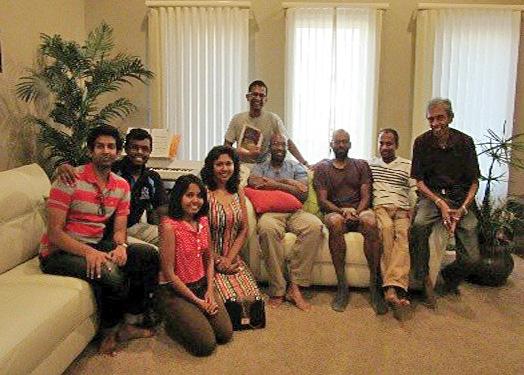
Board of Directors of the Sri Lankan Association of Manitoba in 2016.
vice president was previously a board member. She was the only board member with that experience, and she represented the Christian community.
Board members were represented at several Sri Lankan non-profit organizations (Manitoba Buddhist Vihara, Buddha Meditation Centre Winnipeg Mahamevnawa and Bloomfield

ryllis and grow new plants, but the exercise is not for the impatient. First, allowing the plant’s energy to go into producing a seed will mean that there is less energy to go into developing the bulb, which means a smaller bloom next year from your parent plant. Second, the baby plant probably won’t look like the parent. And third, it will take up to five years to produce a flower. Not so easy as buying more bulbs, but the botanically inclined aren’t necessarily looking for an easy fix!
9. Is it a dud? If your plant gets good leaves but doesn’t bloom, give it a second chance before tossing it on the compost heap. Fertilize through the growing pe-
From the raw rebellion of '70s punk to the genre-bending sounds of today's indie innovators, Close to the Edge is your backstage pass to the evolution of alternative music. Each episode dives deep into the artists, albums and underground movement that shaped generations – from punk-pioneers and shoegaze dreamers to the alt-rock icons of the '90s and the boundary-pushers of today. Whether you're a vinyl junkie, a playlist curator, or just discovering the magic of the alternative scene, this podcast is your sonic time machine. Tune in for rare tracks, deep cuts, and stories that go beyond the liner notes.
Check out episodes here: https://www.buzzsprout.com/2536911
Cricket & Cultural Club).
Three male board members completed their post-graduate studies in Canada and later they were employed. Later Tamil and Hindu BMs also joined. Canada Day
SLAM celebrated Canada Day on July 1, 2015, at St. Vital Park. Special features included a few food vendors to sell their food for Sri Lankan attendees. There was good participation thanks to several newly migrated young people from the university student community. Christmas Ceremony
On Dec. 19, 2015, a Christmas celebration was held at the Masonic Memorial Temple. Two newly arrived Sri Lankan graduate students and another person acted as MCs for the celebration. Sri Lankans from Brandon also attended. Great attendance: 183 members, three non-members and 20 kids for a total of 206.
riod with 20-20-20 and make sure the plant gets optimal light without getting strong, direct sunlight that could scorch the leaves. Then follow the steps in #4 above and chances are you’ll be rewarded. 10. Watering. Amaryllis bulbs are particularly susceptible to rot if they’re left in clammy quarters. Make sure the pot you use has drainage holes in the bottom. When you first plant the bulb, give the soil a good soaking, letting the excess water drain out into the sink; don’t leave the drainage tray full of water. Take particular care not to water the nose of the bulb. After that first watering, don’t give it anything more until growth shows, and then only when the soil is dry. (If the soil dries out before you see growth then water sparingly.) Once the plant has two nice big leaves on it, go ahead and water about once per week.
Notwithstanding all this advice, I took it upon myself to challenge the assertion of about one bulb per pot. After taking a look at how this beauty makes out in warmer climes, I concluded that I could raise a family in a larger pot and that the family could perhaps eventually produce a bouquet of flowers.
Well, I do still get flowers, not always all at once, but often in succession, extending the bloom period. Here is the family after being brought back indoors from its summer holiday. Hoping for big things this Christmas!
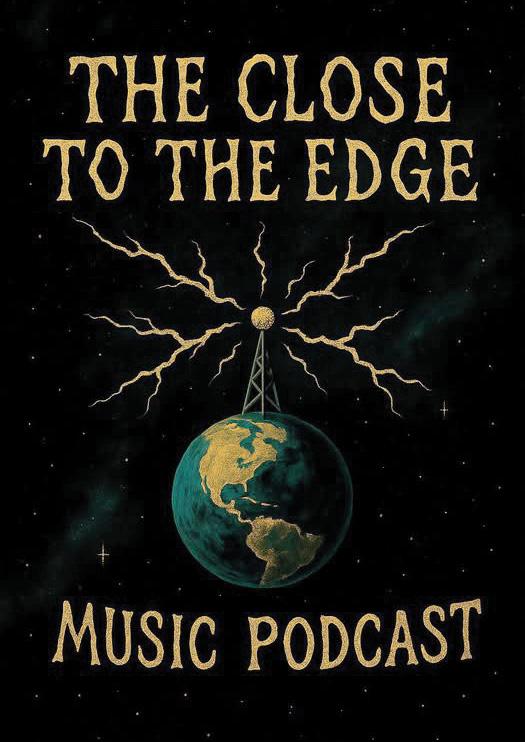


Creative Retirement Manitoba Inc. 204-481-5030, hello@crcentre.ca www.crcentre.ca
WINNIPEG
20 Fort Street Seniors Club
2200-20 Fort Street / FortStSeniors@Shaw.ca
Rainbow Resource Centre
514 St. Mary Avenue / 204-474-0212 ext 255 OTR@rainbowresourcecentre.org www.rainbowresourcecentre.org
The Salvation Army Barbara Mitchell Family Resource Centre 51 Morrow Avenue / 204-946-9153 sheila.keys@salvationarmy.ca
A&O Support Services for Older Adults Inc. 200 - 207 Donald Street 204-956-6440 / Toll Free: 1-888-333-3121 info@aosupportservices.ca www.aosupportservices.ca
Archwood 55 Plus 565 Guilbault Avenue / 204-416-1067 archwood55@shaw.ca archwood55plus.wildapricot.org/ Bleak House Centre 1637 Main Street / 204-338-4723 bleakhousecentre@gmail.com www.bleakhousecentre.com
Brooklands Active Living Centre 1960 William Avenue W 204-632-8367 / bpscc@mymts.net
Centro Caboto Centre 1055 Wilkes Avenue / 204-487-4597 ext. 1 executivedirector@cabotocentre.com www.cabotocentre.com
Charleswood Active Living Centre A 357 Oakdale Drive / 204-897-5263 info@charleswoodseniorcentre.org www.charleswoodseniorcentre.org
Dakota Community Centre 1188 Dakota Street / 204-254-1010 ext. 217 seniorresources@dakotacc.com www.dakotacc.com
Dufferin Senior Citizens Inc. 377 Dufferin Avenue / 204-986-2608
Elmwood East Kildonan Active Living Centre 180 Poplar Avenue / 204-669-0750 healthrelations@chalmersrenewal.org chalmersrenewal.org
Garden City Community Centre Seniors 55+ 725 Kingsbury Avenue / 204-940-6111 facilities@gardencitycc.com www.gardencitycc.com/seniors
Golden Rule Seniors Resource Centre 625 Osborne Street / 204-306-1114 goldenrule@swsrc.ca facebook.com/goldenruleseniors
Good Neighbours Active Living Centre 720 Henderson Hwy / 204-669-1710 admin@gnalc.ca / www.gnalc.ca
Gwen Secter Creative Living Centre 1588 Main Street / 204-339-1701 becky@gwensecter.com / www.gwensecter.com
Headingley Seniors’ Services 5353 Portage Avenue / 204-889-3132 ext. 3 seniors@rmofheadingley.ca www.headingleyseniorsservices.ca
Indigenous Senior Resource Centre Inc. A1- 100 Robinson Avenue / 204-586-4595 executivedirector@isrcwpg.ca www.asrcwpg.ca
Manitoba Korean 55+ Centre 900-150 River Avenue 204-996-7003 / www.ksam.ca
North Centennial Seniors Association of Winnipeg Inc. 86 Sinclair Street / 204-582-0066 ncsc@shaw.ca / www.ncseniors.ca
North Point Douglas Senior Centre 117 Euclid Avenue / dzedzora107@gmail.com bkuluk751@gmail.com
Old Grace Housing Co-op 100-200 Arlington Street wellness.oghc@gmail.com
Pembina Active Living (55+) 933 Summerside Avenue / 204-946-0839 office@pal55plus.ca / www.pal55plus.ca
Rady Jewish Community Centre 123 Doncaster Street / 204-477-7539 lmarjovsky@radyjcc.com / www.radyjcc.com
Somali Help Age Association 519 Beverley Street / 204-881-6364 somalihelpage@gmail.com
South Winnipeg Seniors Resource Council 117-1 Morley Ave / 204-478-6169 resources@swsrc.ca / www.swsrc.ca
Southdale Seniors 254 Lakewood Boulevard / 204-257-6171 gm@southdale.ca / www.southdale.ca
Sri Lankan Seniors Manitoba 113 Stan Bailie Drive 204-261-9647 / www.srilankanseniorsmb.ca
St. James-Assiniboia 55+ Centre 3-203 Duffield Street 204-987-8850 / info@stjamescentre.com www.stjamescentre.com
Transcona Council for Seniors 845 Regent Ave / 204-222-9879 tcs@mymts.net / www.transconaseniors.ca
Transcona Retired Citizens Org. 328 Whittier Ave. West 204-222-8473 / trco328@shaw.ca
Vital Seniors 3 St Vital Road / 204-253-0555 stmary@mymts.net www.stmarymagdelenewpg.org
Winnipeg Chinese Senior Association 204-291-7798 / wcsa.wpg@hotmail.com www.winnipegchineseseniors.ca
BEYOND WINNIPEG
BEAUSEJOUR
Beau-Head Senior Centre 645 Park Avenue 204-268-2444 / beauhead@mymts.net
BINSCARTH / RUSSELL
Senior Services of Banner County 204-532-2391 seniorservicesofbannercounty@gmail.com
BOISSEVAIN
Seniors’ Services of the Turtle Mountain Area 204-534-6816 / seniorservicetm@gmail.com
BRANDON
Brandon Seniors for Seniors Co-op Inc. 311 Park Avenue E / 204-571-2050 reception@brandons4s.ca www.brandons4s.ca
Health Checks 204-728-1842 / brandonmbhealthchecks.ca healthchecksbrandon@gmail.com
CARMAN
Carman Active Living Centre 47 Ed Belfour Drive / 204-745-2356 www.activelivingcentrecarman.ca
CRANBERRY PORTAGE
Jubilee Recreation of Cranberry Portage Legion Hall 217 2nd Ave. SE / 204-271-3081
CRYSTAL CITY
Crystal City & District Friendship Club Inc. 117 Broadway St. / 431-867-0122 crystalcityfriendship@gmail.com
DAUPHIN
Dauphin Active Living Centre Inc. 55 1st Avenue SE / 204-638-6485 www.dauphinseniors.com
DELORAINE
Deloraine Community Club Inc. 111 South Railway Ave E / 204-747-2846
Seniors’ Outreach Services of BrenWin Inc. 204-747-3283 / sosbrenwin@gmail.com sosbrenwin.com
ELIE
Cartier Senior Citizens Support Committee Inc. 11 Magloire Street, Suite #1 / 204-353-2470 cartierseniors55@outlook.com
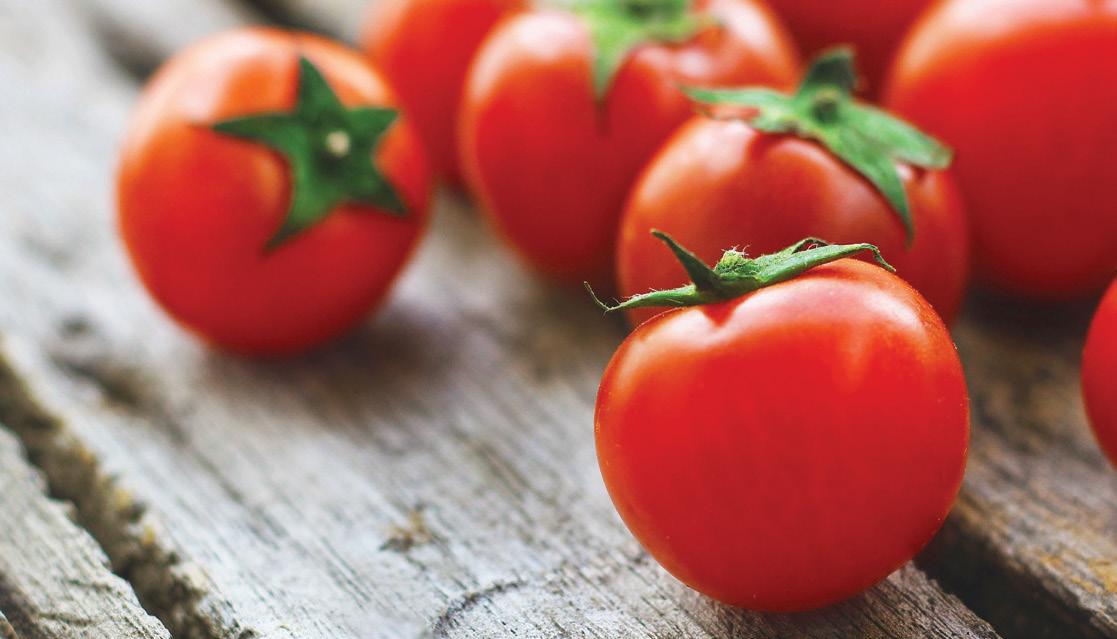
ERICKSON
Comfort Drop In Centre
31 Main Street / 204-636-2047 areas@mymts.net
FLIN FLON
Flin Flon Seniors 2 North Avenue / 204-687-7308
GILBERT PLAINS
Gilbert Plains and District Community Resource Council Inc. 204-548-4131 / gpdcrc@mymts.net gpseniors.ca
Gilbert Plains Drop In Centre 22 Main Street North / 204-548-2210
GIMLI
Gimli New Horizons 55+ Centre 17 Loni Beach Road 204-642-7909 / gimli55@mts.net www.gimlinewhorizons.com
GLADSTONE
Gladstone Seniors Inc. 32 Morris Ave. North / 204-385-2205
GRAND MARAIS
Grand Marais & District Seniors 36058 PTH 12 / gmdseniors@gmail.com www.gmdseniors.ca
GRANDVIEW
Grandview Seniors Drop In 432 Main Street / 204-546-2272
HAMIOTA
Hamiota 55+ Centre & Restore Community Co-op Inc. 44 Maple Avenue / 204-764-2658
KILLARNEY
Killarney New Horizons Centre 520 Mountain Avenue www.killarneymbseniors.ca
Killarney Service for Seniors 415 Broadway / 204-523-7115 seniorservice@killarney.ca
LA BROQUERIE and STE. ANNE
Seine River Services for Seniors Inc./ Services Rivière Seine pour aînés Inc. 93 Principale Street / 204-424-5285 src@seineriverservicesforseniors.ca seineriverservicesforseniors.ca
LUNDAR
Lundar Community Resources 35 Main Street / 204-762-5378 lcrc@mymts.net
MANITOU
Pembina Community Resource Council 315 Main Street / 204-242-2241 pembinacrc@gmail.com
MINNEDOSA
Minnedosa Senior Citizens Assoc.
31 Main Street S / 204-867-1956 mdsasca@gmail.com
MORDEN
Morden Activity Centre 306 N Railway Street / 204-822-3555 mordenactivitycentre@gmail.com www.mordenseniors.ca
NEEPAWA
Neepawa Drop In Centre 310 Davidson Street / 204-476-5103 Neepawa-dropin@outlook.com www.neepawa.ca/district-drop-in-center
NOTRE DAME DE LOURDES Club D’age Dor Notre Dame 204-248-7291 / ndslchezsoi@gmail.com
PILOT MOUND Pilot Mound Fellowship Centre 203 Broadway Avenue / 204-825-2873
PLUMAS
Plumas Seniors Citizens Club Inc. 102 White Street / 204-386-2029
PORTAGE LA PRAIRIE
Herman Prior Senior Services Centre 40 Royal Road N. / 204-857-6951 hermanpriorcentre@gmail.com www.hermanprior.com
Portage Service for Seniors 40A Royal Road N. / 204-239-6312 psfsmeals@shaw.ca portageservicefors.wixsite.com/psfs
RIVERTON
Riverton Seniors Activity Centre
12 Main Street / 204-378-5155 rdfc@mymts.net / www.rivertonfc.com
ROSSBURN
Rossburn Community Resource Council 71 Main Street / 204-859-3386 rosscomm@outlook.com
SANDY LAKE
Sandy Lake Drop In Centre 100 Main St. / 204-585-2411
Municipality of Harrison Park - Age Friendly Initiative Committee 204-585-5310
SELKIRK
Gordon Howard Centre 384 Eveline Street / 204-785-2092 executivedirector@gordonhoward.ca www.gordonhoward.ca
SNOW LAKE
Snow Lake Senior Centre 71 Balsam Street / 204-358-2151 snowsrs@mymts.net
SOUTH JUNCTION
Piney Regional Senior Services 204-437-2604 / lgdseniors@gmail.com
ST. LAURENT Age Friendly Committee of St. Laurent 204-906-9607
STARBUCK MacDonald Services to Seniors 204-735-3052 / info@mcdonaldseniors.ca www.macdonaldseniors.ca
STEINBACH
Pat Porter Active Living Centre 10 Chrysler Gate / 204-320-4600 ed@patporteralc.com www.patporteralc.com
STONEWALL
South Interlake 55 Plus 374 1st Street West - Oddfellows Hall 204-467-2582 / si55plus@mymts.net www.si55plus.org
SWAN RIVER Swan River & District Community Resource Council 126 6th Ave N / 204-734-5707 resourcecouncil@srseniorservices.com
Swan River Senior Citizens Centre 702 1st Street North / 204-734-2212 THE PAS The Pas Golden Agers 324 Ross Avenue / 204-623-3663 seniorsthepas@gmail.com
THOMPSON Thompson Seniors Community Resource Council Inc. 4 Nelson Rd. / 204-677-0987 thompsonseniors55@gmail.com thompsonseniors.ca
TREHERNE Treherne Friendship Centre 190 Broadway Street 204-723-2559 / jstate1066@gmail.com
VICTORIA BEACH East Beaches Social Scene 3 Ateah Road / 204-756-6468 ebssinc1@gmail.com www.ebseniorscene.ca East Beaches Resource Centre 3 Ateah Road / 204-756-6471 ebresourcec@gmail.com ebresourcec.weebly.com
VIRDEN Seniors Access to Independent Living 204-851-2761 / sail.cao.2023@gmail.com
WINKLER Winkler & District MP Senior Centre 102-650 South Railway Avenue 204-325-8964 director@winklerseniorcentre.com www.winklerseniorcentre.com




Robert Urano
What do you feed your dog? Your cat? If you are like most owners, you purchase your pet food at the supermarket when you buy your weekly groceries, at a discount retailer or you make a special trip to a pet specialty store. But do you really know what’s in your pet food? If you look at the packaging on many of these foods, you might think the food contains choice cuts of beef, plump chicken, fresh fruits and vegetables, wholesome grains. However, most of what comprises dog and cat food comes from the rendering plant and food unfit for human consumption.
When cattle, pigs, chickens, lambs, and other animals are slaughtered, the muscle, surrounding fat and perhaps parts like liver and tongue are taken for human consumption. The leftovers become pet food.
Processors add diseased animals, animals that died at the farm, spoiled meat from supermarkets and used restaurant grease. Leftover grains are included: corn, rice, wheat, barley, sorghum, oats, or rye after most of their nutrients have been removed.
Dogs or cats would not eat this highly processed stuff but since these animals use their sense of smell to judge a food's suitability, manufacturers spray fats on the kibble to make them appetizing. The fat also acts to bind various flavour enhancers, both natural and artificial, that are used to trick the animal into eating something that it would otherwise ignore.
The pet food market is dominated by a few huge multi-national corporations that have acquired many successful pet food companies. Nestles owns Purina which makes Dog Chow, Cat Chow, Fancy Feast, Alpo, Friskies, Beneful, ProPlan, Purina Veterinary Diets and several other brands. Mars Inc.’s labels include Pedigree, Whiskas, Sheba, Temptations, Royal Canin, Waltham, Nutro and several more. Del Monte's brands include Kibbles ’n Bits, Meow Mix, Gravy Train, 9 Lives, Nature's Recipe, Milk Bone, Pup-Peroni, Sausages, Pounce and others. Hill's Science Diet is owned by Colgate-Palmol-

ive and Proctor & Gamble bought the Iams Co. and marketed the brand to the masses. When you consider the large number of varieties (puppy, kitten, weight control, senior etc.) and the vast number of flavours that are produced under these labels it is easy to see why they dominate the pet food isles. From a business viewpoint, pet food fits nicely with companies that make human products. These multinationals have tremendous purchasing and marketing power; they can use the waste products from their human food divisions; and they have the clout to get their products onto store shelves. The only way a consumer can discover what is in
the product is by reading the label. But even here the customer may be misled. Many dried foods are grain based. Since ingredients are listed in descending order of weight, manufacturers use several different sources of grain so that they can be scattered throughout the list of ingredients.
For example, rice, brown rice, brewers’ rice, corn and corn gluten are listed as separate ingredients. However, the grains combined in most cases make up the largest part of the formula. To avoid the appearance of too many grains, a recent trend has been to include vegetables and some fruits. Again, exactly how much, and what quality is not given. Moreover, dogs and cats are carnivores so why the abundance of grains, vegetables, and fruits in the formulas at all? Marketing purposely blurs the line between what’s good for us and what’s good for our pets.
What about purchasing foods from smaller companies that just make pet food? Usually, these companies try to differentiate themselves from the big players by offering super premium or ultra premium foods. Unfortunately, there are no set standards for these labels, just as there is no standard for a product calling itself “natural”. Nevertheless, these foods often use better sources of protein and in some instances use human grade ingredients. Again, when reading the packaging one must separate hype from fact.
So where does this lead the beleaguered pet owner? Unfortunately, it is difficult to find an objective answer to what is the best food for our pets. There is no one you can ask at the supermarket. At the pet specialty store you may be shown products that are the most profitable for the retailer. Your veterinarian is not highly trained in animal nutrition and often sells food himself.
Pet food manufacturers argue that pets live longer than they used to. However, the number of diabetic cats, dogs with skin allergies and the incidence of obesity in both dogs and cats suggests that many of these foods are not serving our pets well.
Robert Urano was a longtime operator of a pet food store.


You should consider having the following in place
Will
The preparation of a will may seem like a daunting task, however, it is essential to ensure that your property is disposed of according to your wishes upon your death. If you pass away without a valid will, the law states what is to happen to your estate.
Power of Attorney
A power of attorney is a document which appoints an individual to handle your affairs in the event you become mentally incapable of making your own decisions. Nothing prevents you from continuing to make your own decisions while you are still competent. A power of attorney is an extremely valuable document to have in place in case anything happens to you which affects your mental ability, such as a stroke, coma or dementia.
Health Care Directive (Living Will)
A health care directive, commonly called a living will, is a document which appoints an individual to make decisions with regard to your health care only, while you are alive but unable to express your decisions yourself. This document is distinct from a power of attorney and deals only with health care decisions such as whether life sustaining treatments, such as CPR or blood transfusion, should be continued or withdrawn.
Standard Fees*
Last
GST and PST
Seniors
• LIFE LEASE independent living for 55+ in a close-knit community.
• Prime location with indoor access to shopping, dining, medical services, Arena, the Y and Millennium Library.
• Security and emergency response services for added peace of mind.
• Spacious one-bedroom and two-bedroom options available.
• Features include in-suite washer and dryer, and heated parking.
• Suites can be customized according to your preference.
• Cat-friendly.

TACIUM VINCENT & ASSOCIATES
206 St. Mary’s Road, Winnipeg, MB R2H 1J3 DAVID G. VINCENT (204) 989-4236
www.taciumvincent.com


